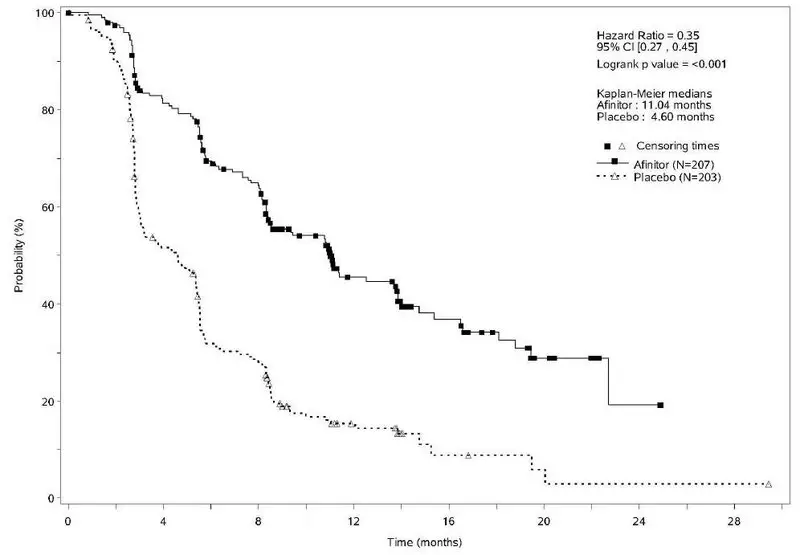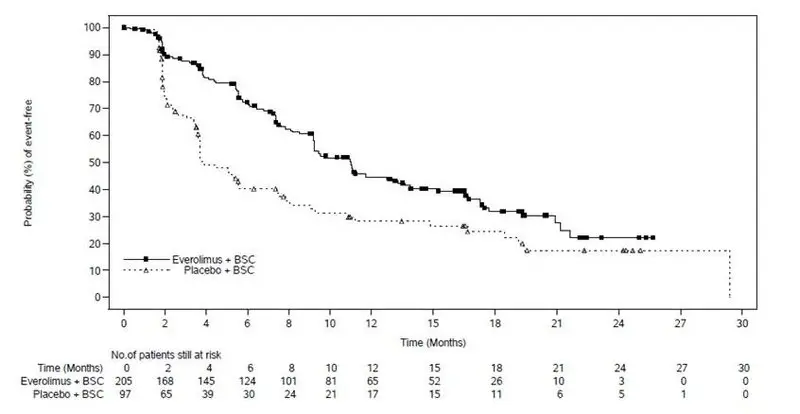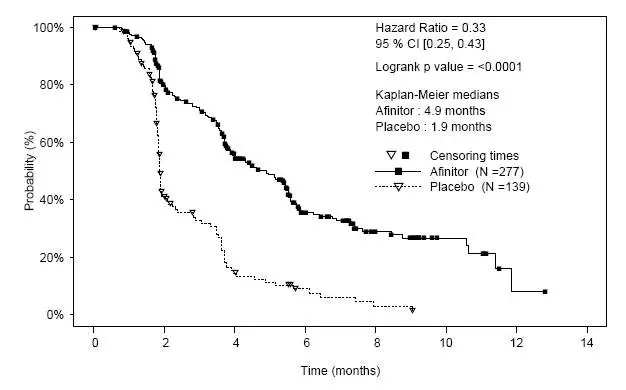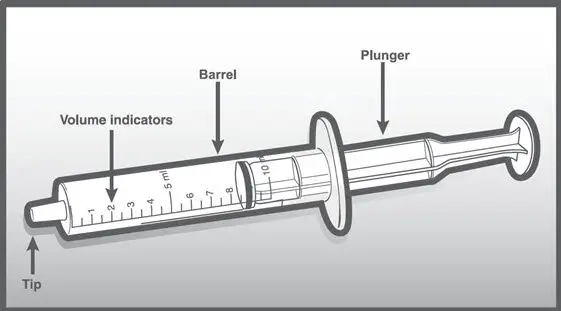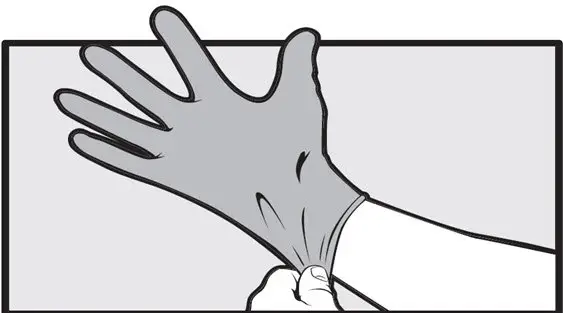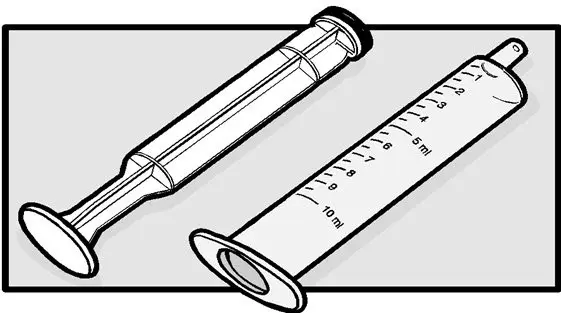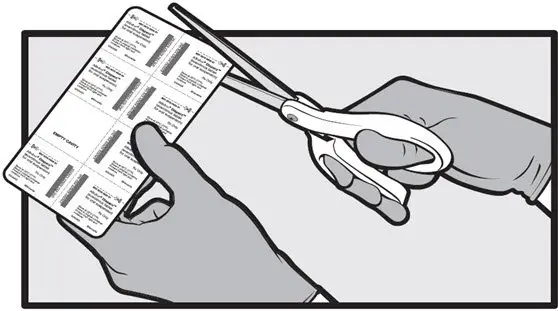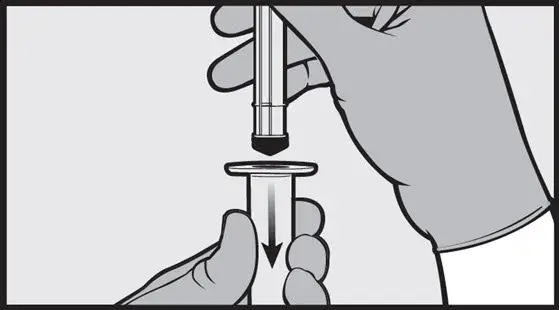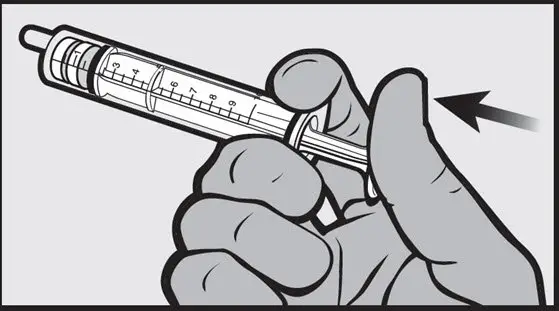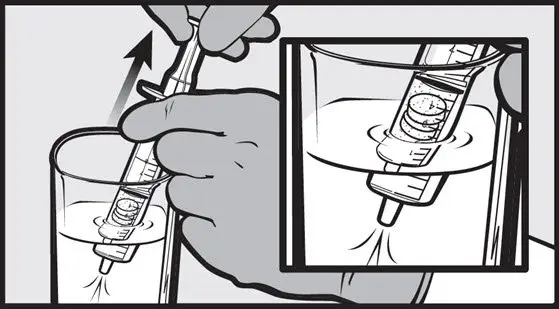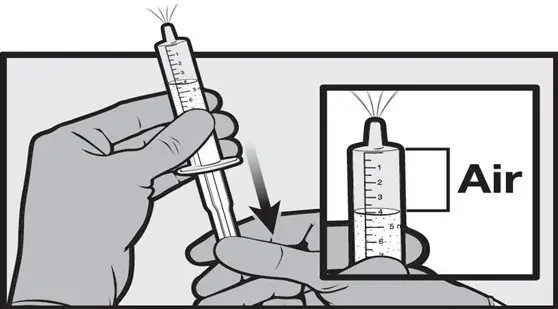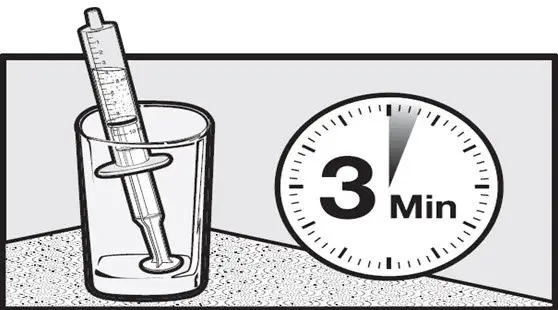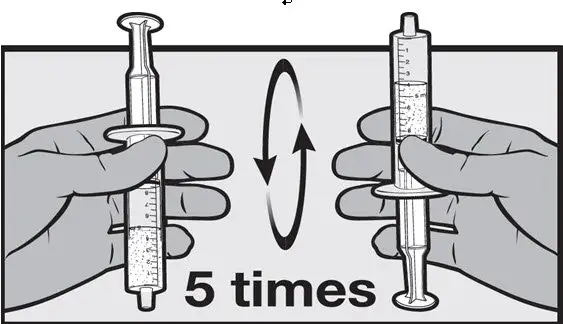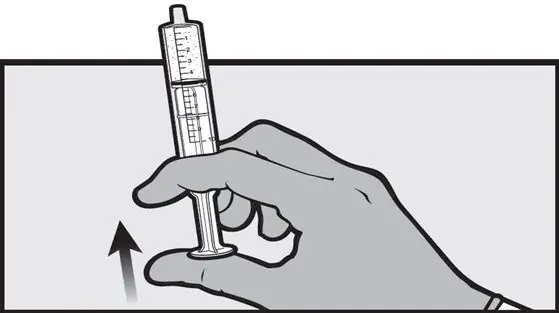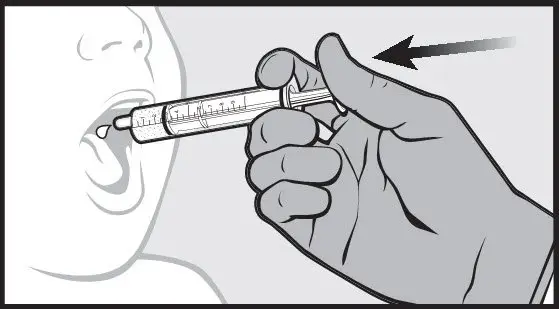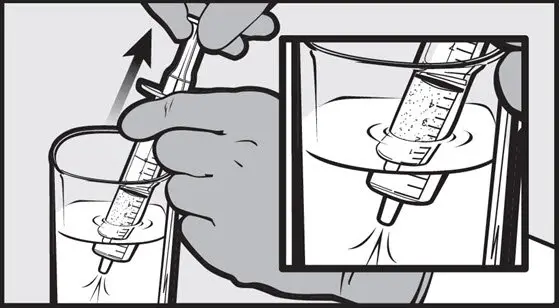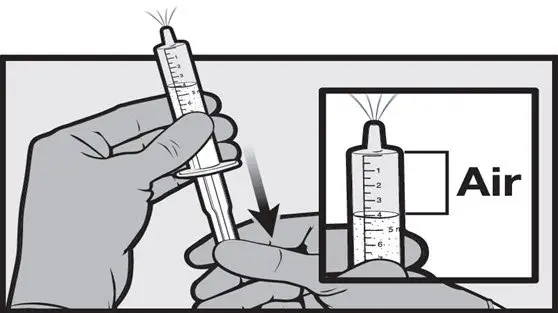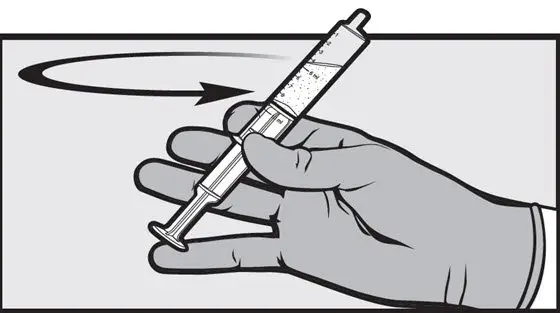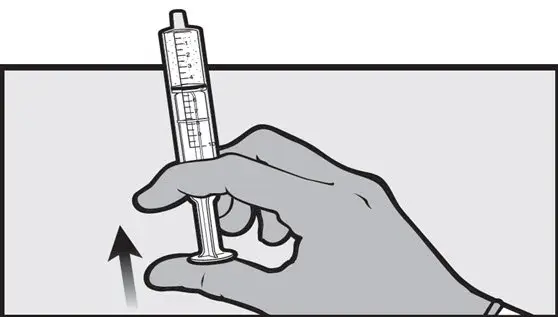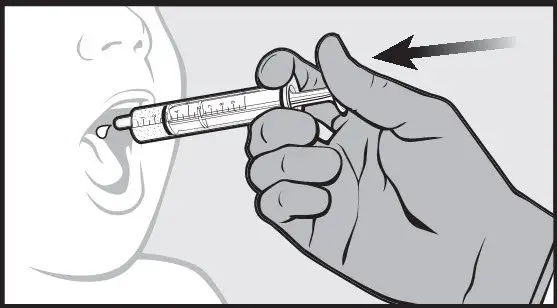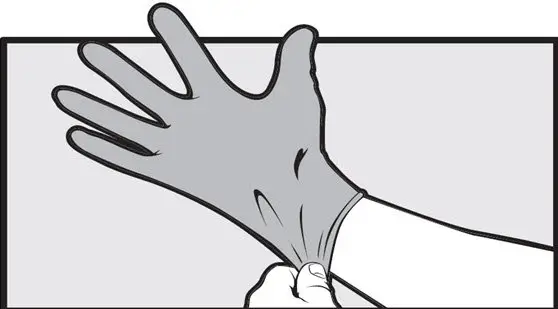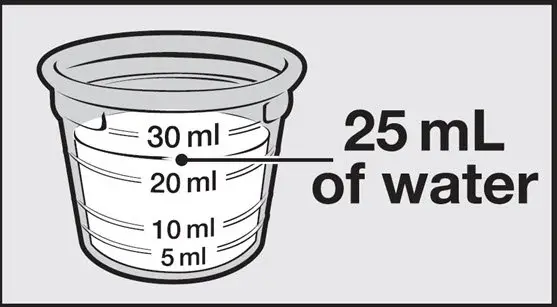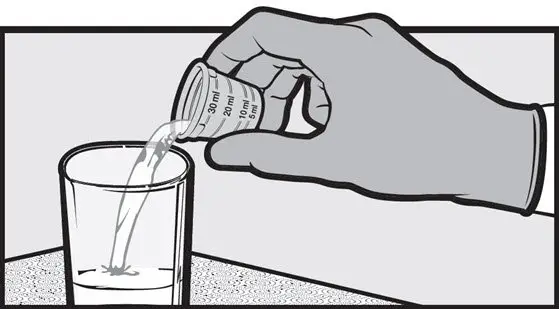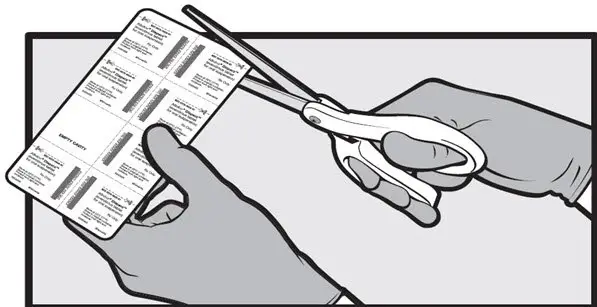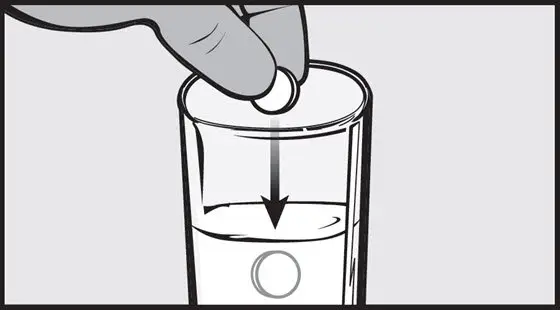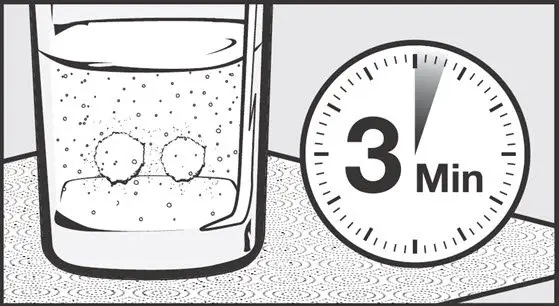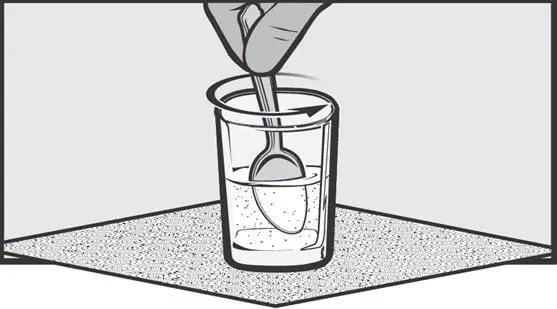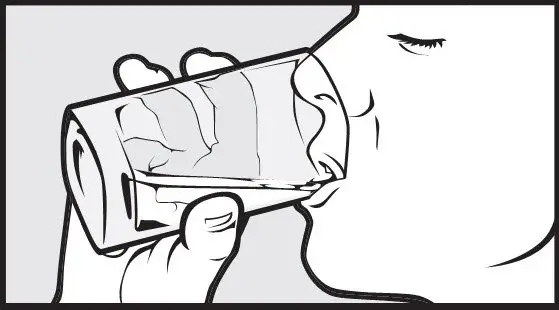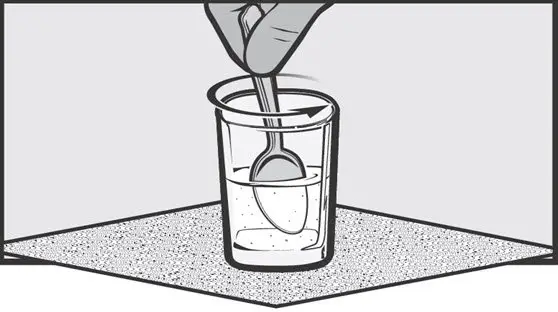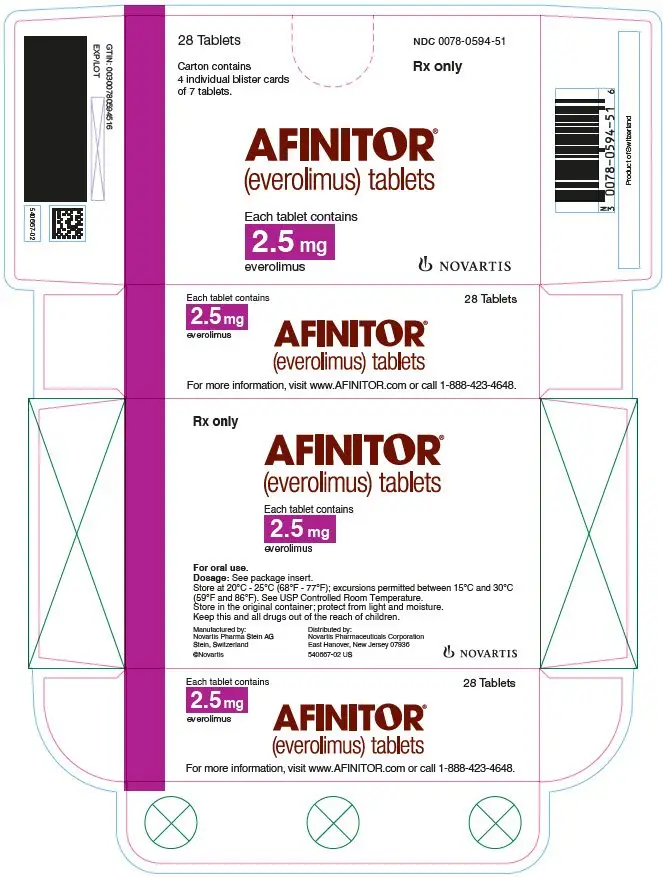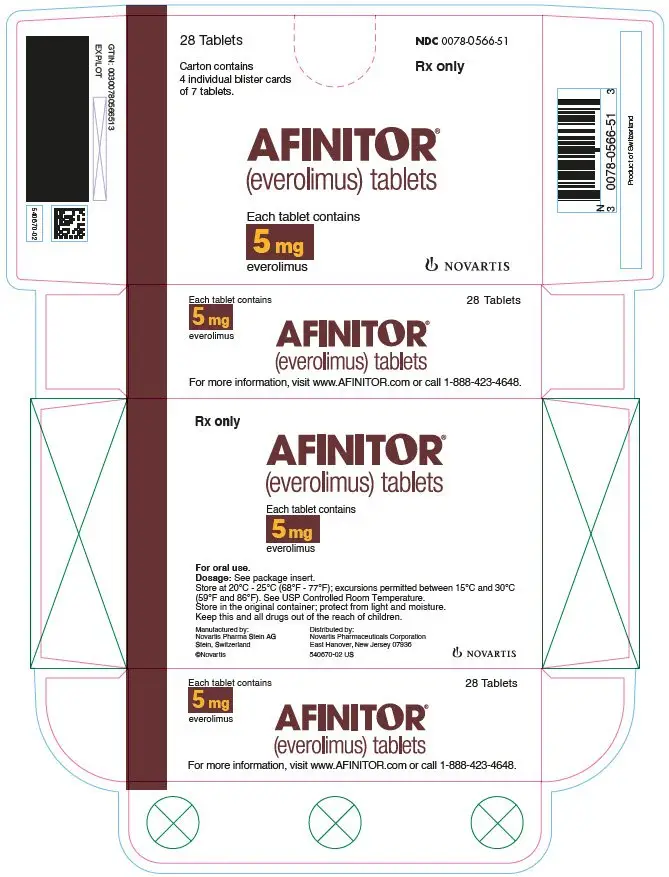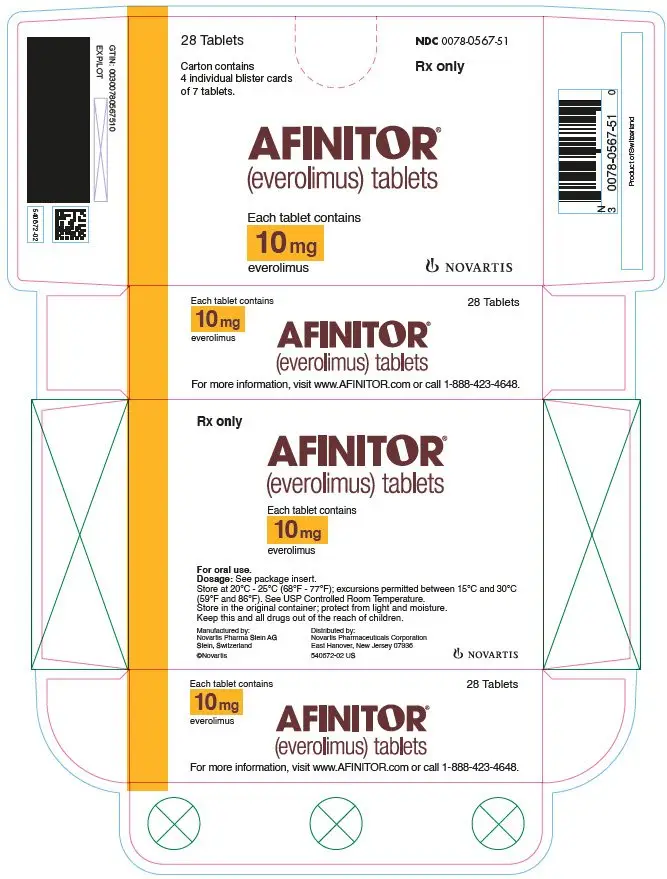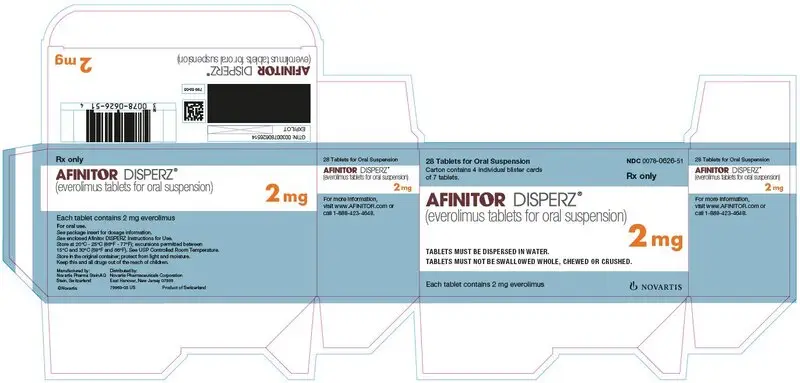Drug Detail:Afinitor (Everolimus)
Drug Class: MTOR inhibitors Selective immunosuppressants
Highlights of Prescribing Information
AFINITOR® (everolimus) tablets, for oral use
AFINITOR DISPERZ® (everolimus tablets for oral suspension)
Initial U.S. Approval: 2009
Recent Major Changes
| Warnings and Precautions, Radiation Sensitization and Radiation Recall (5.12) | 4/2021 |
Indications and Usage for Afinitor
AFINITOR is a kinase inhibitor indicated for the treatment of:
- Postmenopausal women with advanced hormone receptor-positive, HER2-negative breast cancer in combination with exemestane after failure of treatment with letrozole or anastrozole. (1.1)
- Adults with progressive neuroendocrine tumors of pancreatic origin (PNET) and adults with progressive, well-differentiated, non-functional neuroendocrine tumors (NET) of gastrointestinal (GI) or lung origin that are unresectable, locally advanced or metastatic.
Limitations of Use: AFINITOR is not indicated for the treatment of patients with functional carcinoid tumors. (1.2)
- Adults with advanced renal cell carcinoma (RCC) after failure of treatment with sunitinib or sorafenib. (1.3)
- Adults with renal angiomyolipoma and tuberous sclerosis complex (TSC), not requiring immediate surgery. (1.4)
AFINITOR and AFINITOR DISPERZ are kinase inhibitors indicated for the treatment of adult and pediatric patients aged 1 year and older with TSC who have subependymal giant cell astrocytoma (SEGA) that requires therapeutic intervention but cannot be curatively resected. (1.5)
AFINITOR DISPERZ is a kinase inhibitor indicated for the adjunctive treatment of adult and pediatric patients aged 2 years and older with TSC-associated partial-onset seizures. (1.6)
Afinitor Dosage and Administration
Do not combine AFINITOR and AFINITOR DISPERZ to achieve the total daily dose. (2.1)
Modify the dose for patients with hepatic impairment or for patients taking drugs that inhibit or induce P-glycoprotein (P-gp) and CYP3A4. (2.1)
Breast Cancer:
- 10 mg orally once daily. (2.2)
NET:
- 10 mg orally once daily. (2.3)
RCC:
- 10 mg orally once daily. (2.4)
TSC-Associated Renal Angiomyolipoma:
- 10 mg orally once daily. (2.5)
TSC-Associated SEGA:
- 4.5 mg/m2 orally once daily; adjust dose to attain trough concentrations of 5-15 ng/mL. (2.6, 2.8)
TSC-Associated Partial-Onset Seizures:
- 5 mg/m2 orally once daily; adjust dose to attain trough concentrations of 5-15 ng/mL. (2.7, 2.8)
Dosage Forms and Strengths
- AFINITOR: 2.5 mg, 5 mg, 7.5 mg, and 10 mg tablets (3)
- AFINITOR DISPERZ: 2 mg, 3 mg, and 5 mg tablets (3)
Contraindications
Clinically significant hypersensitivity to everolimus or to other rapamycin derivatives. (4)
Warnings and Precautions
- Non-Infectious Pneumonitis: Monitor for clinical symptoms or radiological changes. Withhold or permanently discontinue based on severity. (2.9, 5.1)
- Infections: Monitor for signs and symptoms of infection. Withhold or permanently discontinue based on severity. (2.9, 5.2)
- Severe Hypersensitivity Reactions: Permanently discontinue for clinically significant hypersensitivity. (5.3)
- Angioedema: Patients taking concomitant angiotensin-converting-enzyme (ACE) inhibitors may be at increased risk for angioedema. Permanently discontinue for angioedema. (5.4, 7.2)
- Stomatitis: Initiate dexamethasone alcohol-free mouthwash when starting treatment. (5.5, 6.1)
- Renal Failure: Monitor renal function prior to treatment and periodically thereafter. (5.6)
- Risk of Impaired Wound Healing: Withhold for at least 1 week prior to elective surgery. Do not administer for at least 2 weeks following major surgery and until adequate wound healing. The safety of resumption of treatment after resolution of wound healing complications has not been established. (5.7)
- Geriatric Patients: Monitor and adjust dose for adverse reactions. (5.8)
- Metabolic Disorders: Monitor serum glucose and lipids prior to treatment and periodically thereafter. Withhold or permanently discontinue based on severity. (2.9, 5.9)
- Myelosuppression: Monitor hematologic parameters prior to treatment and periodically thereafter. Withhold or permanently discontinue based on severity. (2.9, 5.10)
- Risk of Infection or Reduced Immune Response with Vaccination: Avoid live vaccines and close contact with those who have received live vaccines. Complete recommended childhood vaccinations prior to starting treatment. (5.11)
- Radiation Sensitization and Radiation Recall: Severe radiation reactions may occur. (5.12, 6.2)
- Embryo-Fetal Toxicity: Can cause fetal harm. Advise patients of reproductive potential of the potential risk to a fetus and to use effective contraception. (5.13, 8.1, 8.3)
Adverse Reactions/Side Effects
- Breast cancer, NET, RCC: Most common adverse reactions (incidence ≥ 30%) include stomatitis, infections, rash, fatigue, diarrhea, edema, abdominal pain, nausea, fever, asthenia, cough, headache, and decreased appetite. (6.1)
- TSC-Associated Renal Angiomyolipoma: Most common adverse reaction (incidence ≥ 30%) is stomatitis. (6.1)
- TSC-Associated SEGA: Most common adverse reactions (incidence ≥ 30%) are stomatitis and respiratory tract infection. (6.1)
- TSC-Associated Partial-Onset Seizures: Most common adverse reaction (incidence ≥ 30%) is stomatitis. (6.1)
To report SUSPECTED ADVERSE REACTIONS, contact Novartis Pharmaceuticals Corporation at 1-888-669-6682 or FDA at 1-800-FDA-1088 or www.fda.gov/medwatch.
Drug Interactions
- P-gp and strong CYP3A4 inhibitors: Avoid concomitant use. (2.11, 7.1)
- P-gp and moderate CYP3A4 inhibitors: Reduce the dose as recommended. (2.11, 7.1)
- P-gp and strong CYP3A4 inducers: Increase the dose as recommended. (2.12, 7.1)
Use In Specific Populations
- For breast cancer, NET, RCC, or TSC-associated renal angiomyolipoma patients with hepatic impairment, reduce the dose. (2.10, 8.6)
- For patients with TSC-associated SEGA or TSC-associated partial-onset seizures and severe hepatic impairment, reduce the starting dose and adjust dose to attain target trough concentrations. (2.8, 2.10, 8.6)
See 17 for PATIENT COUNSELING INFORMATION and FDA-approved patient labeling.
Revised: 2/2022
Full Prescribing Information
1. Indications and Usage for Afinitor
1.1 Hormone Receptor-Positive, HER2-Negative Breast Cancer
AFINITOR® is indicated for the treatment of postmenopausal women with advanced hormone receptor-positive, HER2-negative breast cancer in combination with exemestane, after failure of treatment with letrozole or anastrozole.
1.2 Neuroendocrine Tumors (NET)
AFINITOR is indicated for the treatment of adult patients with progressive neuroendocrine tumors of pancreatic origin (PNET) with unresectable, locally advanced or metastatic disease.
AFINITOR is indicated for the treatment of adult patients with progressive, well-differentiated, non-functional NET of gastrointestinal (GI) or lung origin with unresectable, locally advanced or metastatic disease.
Limitations of Use: AFINITOR is not indicated for the treatment of patients with functional carcinoid tumors [see Clinical Studies (14.2)].
1.3 Renal Cell Carcinoma (RCC)
AFINITOR is indicated for the treatment of adult patients with advanced RCC after failure of treatment with sunitinib or sorafenib.
1.4 Tuberous Sclerosis Complex (TSC)-Associated Renal Angiomyolipoma
AFINITOR is indicated for the treatment of adult patients with renal angiomyolipoma and TSC, not requiring immediate surgery.
2. Afinitor Dosage and Administration
2.1 Important Dosage Information
- AFINITOR and AFINITOR DISPERZ are two different dosage forms. Select the recommended dosage form based on the indication [see Indications and Usage (1)]. Do not combine AFINITOR and AFINITOR DISPERZ to achieve the total dose.
- Modify the dosage for patients with hepatic impairment or for patients taking drugs that inhibit or induce P-glycoprotein (P-gp) and CYP3A4 [see Dosage and Administration (2.10, 2.11, 2.12)].
2.2 Recommended Dosage for Hormone Receptor-Positive, HER2-Negative Breast Cancer
The recommended dosage of AFINITOR is 10 mg orally once daily until disease progression or unacceptable toxicity.
2.3 Recommended Dosage for Neuroendocrine Tumors (NET)
The recommended dosage of AFINITOR is 10 mg orally once daily until disease progression or unacceptable toxicity.
2.4 Recommended Dosage for Renal Cell Carcinoma (RCC)
The recommended dosage of AFINITOR is 10 mg orally once daily until disease progression or unacceptable toxicity.
2.5 Recommended Dosage for Tuberous Sclerosis Complex (TSC)-Associated Renal Angiomyolipoma
The recommended dosage of AFINITOR is 10 mg orally once daily until disease progression or unacceptable toxicity.
2.6 Recommended Dosage for Tuberous Sclerosis Complex (TSC)-Associated Subependymal Giant Cell Astrocytoma (SEGA)
The recommended starting dosage of AFINITOR/AFINITOR DISPERZ is 4.5 mg/m2 orally once daily until disease progression or unacceptable toxicity [see Dosage and Administration (2.8)].
2.7 Recommended Dosage for Tuberous Sclerosis Complex (TSC)-Associated Partial-Onset Seizures
The recommended starting dosage of AFINITOR DISPERZ is 5 mg/m2 orally once daily until disease progression or unacceptable toxicity [see Dosage and Administration (2.8)].
2.8 Therapeutic Drug Monitoring (TDM) and Dose Titration for Tuberous Sclerosis Complex (TSC)-Associated Subependymal Giant Cell Astrocytoma (SEGA) and TSC-Associated Partial-Onset Seizures
- Monitor everolimus whole blood trough concentrations at time points recommended in Table 1.
- Titrate the dose to attain trough concentrations of 5 ng/mL to 15 ng/mL.
- Adjust the dose using the following equation:
New dose* = current dose x (target concentration divided by current concentration)
*The maximum dose increment at any titration must not exceed 5 mg. Multiple dose titrations may be required to attain the target trough concentration.
- When possible, use the same assay and laboratory for TDM throughout treatment.
| Abbreviation: P-gp, P-glycoprotein. | |
| Event | When to Assess Trough Concentrations After Event |
| Initiation of AFINITOR/AFINITOR DISPERZ | 1 to 2 weeks |
| Modification of AFINITOR/AFINITOR DISPERZ dose | 1 to 2 weeks |
| Switch between AFINITOR and AFINITOR DISPERZ | 1 to 2 weeks |
| Initiation or discontinuation of P-gp and moderate CYP3A4 inhibitor | 2 weeks |
| Initiation or discontinuation of P-gp and strong CYP3A4 inducer | 2 weeks |
| Change in hepatic function | 2 weeks |
| Stable dose with changing body surface area (BSA) | Every 3 to 6 months |
| Stable dose with stable BSA | Every 6 to 12 months |
2.9 Dosage Modifications for Adverse Reactions
Table 2 summarizes recommendations for dosage modifications of AFINITOR/AFINITOR DISPERZ for the management of adverse reactions.
| Adverse Reaction | Severity | Dosage Modification |
|
Non-infectious pneumonitis [see Warnings and Precautions (5.1)] | Grade 2 | Withhold until improvement to Grade 0 or 1. Resume at 50% of previous dose; change to every other day dosing if the reduced dose is lower than the lowest available strength. Permanently discontinue if toxicity does not resolve or improve to Grade 1 within 4 weeks. |
| Grade 3 | Withhold until improvement to Grade 0 or 1. Resume at 50% of previous dose; change to every other day dosing if the reduced dose is lower than the lowest available strength. If toxicity recurs at Grade 3, permanently discontinue. |
|
| Grade 4 | Permanently discontinue. | |
|
Stomatitis [see Warnings and Precautions (5.5)] | Grade 2 | Withhold until improvement to Grade 0 or 1. Resume at same dose. If recurs at Grade 2, withhold until improvement to Grade 0 or 1. Resume at 50% of previous dose; change to every other day dosing if the reduced dose is lower than the lowest available strength. |
| Grade 3 | Withhold until improvement to Grade 0 or 1. Resume at 50% of previous dose; change to every other day dosing if the reduced dose is lower than the lowest available strength. |
|
| Grade 4 | Permanently discontinue. | |
|
Metabolic events (e.g., hyperglycemia, dyslipidemia) [see Warnings and Precautions (5.9)] | Grade 3 | Withhold until improvement to Grade 0, 1, or 2. Resume at 50% of previous dose; change to every other day dosing if the reduced dose is lower than the lowest available strength. |
| Grade 4 | Permanently discontinue. | |
|
Other non-hematologic toxicities | Grade 2 | If toxicity becomes intolerable, withhold until improvement to Grade 0 or 1. Resume at same dose. If toxicity recurs at Grade 2, withhold until improvement to Grade 0 or 1. Resume at 50% of previous dose; change to every other day dosing if the reduced dose is lower than the lowest available strength. |
| Grade 3 | Withhold until improvement to Grade 0 or 1. Consider resuming at 50% of previous dose; change to every other day dosing if the reduced dose is lower than the lowest available strength. If recurs at Grade 3, permanently discontinue. |
|
| Grade 4 | Permanently discontinue. | |
|
Thrombocytopenia [see Warnings and Precautions (5.10)] | Grade 2 | Withhold until improvement to Grade 0 or 1. Resume at same dose. |
| Grade 3 OR Grade 4 | Withhold until improvement to Grade 0 or 1. Resume at 50% of previous dose; change to every other day dosing if the reduced dose is lower than the lowest available strength. | |
|
Neutropenia [see Warnings and Precautions (5.10)] | Grade 3 | Withhold until improvement to Grade 0, 1, or 2. Resume at same dose. |
| Grade 4 | Withhold until improvement to Grade 0, 1, or 2. Resume at 50% of previous dose; change to every other day dosing if the reduced dose is lower than the lowest available strength. | |
|
Febrile neutropenia [see Warnings and Precautions (5.10)] | Grade 3 | Withhold until improvement to Grade 0, 1, or 2, and no fever. Resume at 50% of previous dose; change to every other day dosing if the reduced dose is lower than the lowest available strength. |
| Grade 4 | Permanently discontinue. |
2.10 Dosage Modifications for Hepatic Impairment
The recommended dosages of AFINITOR/AFINITOR DISPERZ for patients with hepatic impairment are described in Table 3 [see Use in Specific Populations (8.6)]:
| Abbreviations: NET, Neuroendocrine Tumors; RCC, Renal Cell Carcinoma; SEGA, Subependymal Giant Cell Astrocytoma; TSC, Tuberous Sclerosis Complex. | ||
| Indication | Dose Modification for AFINITOR/AFINITOR DISPERZ | |
|
Breast Cancer, NET, RCC, and TSC-Associated Renal Angiomyolipoma |
|
|
|
TSC-Associated SEGA and TSC- Associated Partial-Onset Seizures |
|
|
2.11 Dosage Modifications for P-gp and CYP3A4 Inhibitors
- Avoid the concomitant use of P-gp and strong CYP3A4 inhibitors [see Drug Interactions (7.1)].
- Avoid ingesting grapefruit and grapefruit juice.
- Reduce the dose for patients taking AFINITOR/AFINITOR DISPERZ with a P-gp and moderate CYP3A4 inhibitor as recommended in Table 4 [see Drug Interactions (7.1), Clinical Pharmacology (12.3)].
| Indication | Dose Modification for AFINITOR/AFINITOR DISPERZ |
|
Breast Cancer, NET, RCC, and TSC-Associated Renal Angiomyolipoma |
|
|
TSC-Associated SEGA and TSC- Associated Partial-Onset Seizures |
|
2.12 Dosage Modifications for P-gp and CYP3A4 Inducers
- Avoid concomitant use of St. John’s Wort (Hypericum perforatum).
- Increase the dose for patients taking AFINITOR/AFINITOR DISPERZ with a P-gp and strong CYP3A4 inducer as recommended in Table 5 [see Drug Interactions (7.1), Clinical Pharmacology (12.3)].
| Indication | Dose Modification for AFINITOR/AFINITOR DISPERZ |
|
Breast Cancer, NET, RCC, and TSC-Associated Renal Angiomyolipoma |
|
|
TSC-Associated SEGA and TSC- Associated Partial-Onset Seizures |
|
2.13 Administration and Preparation
- Administer AFINITOR/AFINITOR DISPERZ at the same time each day.
- Administer AFINITOR/AFINITOR DISPERZ consistently either with or without food [see Clinical Pharmacology (12.3)].
- If a dose of AFINITOR/AFINITOR DISPERZ is missed, it can be administered up to 6 hours after the time it is normally administered. After more than 6 hours, the dose should be skipped for that day. The next day, AFINITOR/AFINITOR DISPERZ should be administered at its usual time. Double doses should not be administered to make up for the dose that was missed.
AFINITOR
- AFINITOR should be swallowed whole with a glass of water. Do not break or crush tablets.
AFINITOR DISPERZ
- Wear gloves to avoid possible contact with everolimus when preparing suspensions of AFINITOR DISPERZ for another person.
- Administer as a suspension only.
- Administer suspension immediately after preparation. Discard suspension if not administered within 60 minutes after preparation.
- Prepare suspension in water only.
Using an Oral Syringe to Prepare Oral Suspension:
- Place the prescribed dose into a 10-mL syringe. Do not exceed a total of 10 mg per syringe. If higher doses are required, prepare an additional syringe. Do not break or crush tablets.
- Draw approximately 5 mL of water and 4 mL of air into the syringe.
- Place the filled syringe into a container (tip up) for 3 minutes, until the tablets are in suspension.
- Gently invert the syringe 5 times immediately prior to administration.
- After administration of the prepared suspension, draw approximately 5 mL of water and 4 mL of air into the same syringe, and swirl the contents to suspend remaining particles. Administer the entire contents of the syringe.
Using a Small Drinking Glass to Prepare Oral Suspension:
- Place the prescribed dose into a small drinking glass (maximum size 100 mL) containing approximately 25 mL of water. Do not exceed a total of 10 mg per glass. If higher doses are required, prepare an additional glass. Do not break or crush tablets.
- Allow 3 minutes for suspension to occur.
- Stir the contents gently with a spoon, immediately prior to drinking.
- After administration of the prepared suspension, add 25 mL of water and stir with the same spoon to re-suspend remaining particles. Administer the entire contents of the glass.
3. Dosage Forms and Strengths
AFINITOR
Tablets, white to slightly yellow and elongated with a bevelled edge:
- 2.5 mg: engraved with “LCL” on one side and “NVR” on the other.
- 5 mg: engraved with “5” on one side and “NVR” on the other.
- 7.5 mg: engraved with “7P5” on one side and “NVR” on the other.
- 10 mg: engraved with “UHE” on one side and “NVR” on the other.
AFINITOR DISPERZ
Tablets for oral suspension, white to slightly yellowish, round, and flat with a bevelled edge:
- 2 mg: engraved with “D2” on one side and “NVR” on the other.
- 3 mg: engraved with “D3” on one side and “NVR” on the other.
- 5 mg: engraved with “D5” on one side and “NVR” on the other.
4. Contraindications
AFINITOR/AFINITOR DISPERZ is contraindicated in patients with clinically significant hypersensitivity to everolimus or to other rapamycin derivatives [see Warnings and Precautions (5.3)].
5. Warnings and Precautions
5.1 Non-infectious Pneumonitis
Non-infectious pneumonitis is a class effect of rapamycin derivatives. Non-infectious pneumonitis was reported in up to 19% of patients treated with AFINITOR/AFINITOR DISPERZ in clinical trials, some cases were reported with pulmonary hypertension (including pulmonary arterial hypertension) as a secondary event. The incidence of Grade 3 and 4 non-infectious pneumonitis was up to 4% and up to 0.2%, respectively [see Adverse Reactions (6.1)]. Fatal outcomes have been observed.
Consider a diagnosis of non-infectious pneumonitis in patients presenting with non-specific respiratory signs and symptoms. Consider opportunistic infections, such as pneumocystis jiroveci pneumonia (PJP) in the differential diagnosis. Advise patients to report promptly any new or worsening respiratory symptoms.
Continue AFINITOR/AFINITOR DISPERZ without dose alteration in patients who develop radiological changes suggestive of non-infectious pneumonitis and have few or no symptoms. Imaging appears to overestimate the incidence of clinical pneumonitis.
For Grade 2 to 4 non-infectious pneumonitis, withhold or permanently discontinue AFINITOR/AFINITOR DISPERZ based on severity [see Dosage and Administration (2.9)]. Corticosteroids may be indicated until clinical symptoms resolve. Administer prophylaxis for PJP when concomitant use of corticosteroids or other immunosuppressive agents are required. The development of pneumonitis has been reported even at a reduced dose.
5.2 Infections
AFINITOR/AFINITOR DISPERZ has immunosuppressive properties and may predispose patients to bacterial, fungal, viral, or protozoal infections, including infections with opportunistic pathogens [see Adverse Reactions (6.1)]. Localized and systemic infections, including pneumonia, mycobacterial infections, other bacterial infections, invasive fungal infections (e.g., aspergillosis, candidiasis, or PJP), and viral infections (e.g., reactivation of hepatitis B virus) have occurred. Some of these infections have been severe (e.g., sepsis, septic shock, or resulting in multisystem organ failure) or fatal. The incidence of Grade 3 and 4 infections was up to 10% and up to 3%, respectively. The incidence of serious infections was reported at a higher frequency in patients < 6 years of age [see Use in Specific Populations (8.4)].
Complete treatment of preexisting invasive fungal infections prior to starting treatment. Monitor for signs and symptoms of infection. Withhold or permanently discontinue AFINITOR/AFINITOR DISPERZ based on severity of infection [see Dosage and Administration (2.9)].
Administer prophylaxis for PJP when concomitant use of corticosteroids or other immunosuppressive agents are required.
5.3 Severe Hypersensitivity Reactions
Hypersensitivity reactions to AFINITOR/AFINITOR DISPERZ have been observed and include anaphylaxis, dyspnea, flushing, chest pain, and angioedema (e.g., swelling of the airways or tongue, with or without respiratory impairment) [see Contraindications (4)]. The incidence of Grade 3 hypersensitivity reactions was up to 1%. Permanently discontinue AFINITOR/AFINITOR DISPERZ for the development of clinically significant hypersensitivity.
5.4 Angioedema With Concomitant Use of Angiotensin-Converting Enzyme (ACE) Inhibitors
Patients taking concomitant ACE inhibitors with AFINITOR/AFINITOR DISPERZ may be at increased risk for angioedema (e.g., swelling of the airways or tongue, with or without respiratory impairment). In a pooled analysis of randomized double-blind oncology clinical trials, the incidence of angioedema in patients taking AFINITOR with an ACE inhibitor was 6.8% compared to 1.3% in the control arm with an ACE inhibitor. Permanently discontinue AFINITOR/AFINITOR DISPERZ for angioedema.
5.5 Stomatitis
Stomatitis, including mouth ulcers and oral mucositis, has occurred in patients treated with AFINITOR/AFINITOR DISPERZ at an incidence ranging from 44% to 78% across clinical trials. Grades 3-4 stomatitis was reported in 4% to 9% of patients [see Adverse Reactions (6.1)]. Stomatitis most often occurs within the first 8 weeks of treatment. When starting AFINITOR/AFINITOR DISPERZ, initiating dexamethasone alcohol-free oral solution as a swish and spit mouthwash reduces the incidence and severity of stomatitis [see Adverse Reactions (6.1)]. If stomatitis does occur, mouthwashes and/or other topical treatments are recommended. Avoid alcohol-, hydrogen peroxide-, iodine-, or thyme- containing products, as they may exacerbate the condition. Do not administer antifungal agents, unless fungal infection has been diagnosed.
5.6 Renal Failure
Cases of renal failure (including acute renal failure), some with a fatal outcome, have occurred in patients taking AFINITOR. Elevations of serum creatinine and proteinuria have been reported in patients taking AFINITOR/AFINITOR DISPERZ [see Adverse Reactions (6.1)]. The incidence of Grade 3 and 4 elevations of serum creatinine was up to 2% and up to 1%, respectively. The incidence of Grade 3 and 4 proteinuria was up to 1% and up to 0.5%, respectively. Monitor renal function prior to starting AFINITOR/AFINITOR DISPERZ and annually thereafter. Monitor renal function at least every 6 months in patients who have additional risk factors for renal failure.
5.7 Risk of Impaired Wound Healing
Impaired wound healing can occur in patients who receive drugs that inhibit the VEGF signaling pathway. Therefore, AFINITOR/AFINITOR DISPERZ have the potential to adversely affect wound healing.
Withhold AFINITOR/AFINITOR DISPERZ for at least 1 week prior to elective surgery. Do not administer for at least 2 weeks following major surgery and until adequate wound healing. The safety of resumption of treatment upon resolution of wound healing complications has not been established.
5.8 Geriatric Patients
In the randomized hormone receptor-positive, HER2-negative breast cancer study (BOLERO-2), the incidence of deaths due to any cause within 28 days of the last AFINITOR dose was 6% in patients ≥ 65 years of age compared to 2% in patients < 65 years of age. Adverse reactions leading to permanent treatment discontinuation occurred in 33% of patients ≥ 65 years of age compared to 17% in patients < 65 years of age. Careful monitoring and appropriate dose adjustments for adverse reactions are recommended [see Dosage and Administration (2.9), Use in Specific Populations (8.5)].
5.9 Metabolic Disorders
Hyperglycemia, hypercholesterolemia, and hypertriglyceridemia have been reported in patients taking AFINITOR/AFINITOR DISPERZ at an incidence up to 75%, 86%, and 73%, respectively. The incidence of these Grade 3 and 4 laboratory abnormalities was up to 15% and up to 0.4%, respectively [see Adverse Reactions (6.1)]. In non-diabetic patients, monitor fasting serum glucose prior to starting AFINITOR/AFINITOR DISPERZ and annually thereafter. In diabetic patients, monitor fasting serum glucose more frequently as clinically indicated. Monitor lipid profile prior to starting AFINITOR/AFINITOR DISPERZ and annually thereafter. When possible, achieve optimal glucose and lipid control prior to starting AFINITOR/AFINITOR DISPERZ. For Grade 3 to 4 metabolic events, withhold or permanently discontinue AFINITOR/AFINITOR DISPERZ based on severity [see Dosage and Administration (2.9)].
5.10 Myelosuppression
Anemia, lymphopenia, neutropenia, and thrombocytopenia have been reported in patients taking AFINITOR/AFINITOR DISPERZ. The incidence of these Grade 3 and 4 laboratory abnormalities was up to 16% and up to 2%, respectively [see Adverse Reactions (6.1)]. Monitor complete blood count (CBC) prior to starting AFINITOR/AFINITOR DISPERZ every 6 months for the first year of treatment and annually thereafter. Withhold or permanently discontinue AFINITOR/AFINITOR DISPERZ based on severity [see Dosage and Administration (2.9)].
5.11 Risk of Infection or Reduced Immune Response With Vaccination
The safety of immunization with live vaccines during AFINITOR/AFINITOR DISPERZ therapy has not been studied. Due to the potential increased risk of infection, avoid the use of live vaccines and close contact with individuals who have received live vaccines during treatment with AFINITOR/AFINITOR DISPERZ. Due to the potential increased risk of infection or reduced immune response with vaccination, complete the recommended childhood series of vaccinations according to American Council on Immunization Practices (ACIP) guidelines prior to the start of therapy. An accelerated vaccination schedule may be appropriate.
5.12 Radiation Sensitization and Radiation Recall
Radiation sensitization and recall, in some cases severe, involving cutaneous and visceral organs (including radiation esophagitis and pneumonitis) have been reported in patients treated with radiation prior to, during, or subsequent to AFINITOR/AFINITOR DISPERZ treatment [see Adverse Reactions (6.2)].
Monitor patients closely when AFINITOR/AFINITOR DISPERZ is administered during or sequentially with radiation treatment.
5.13 Embryo-Fetal Toxicity
Based on animal studies and the mechanism of action, AFINITOR/AFINITOR DISPERZ can cause fetal harm when administered to a pregnant woman. In animal studies, everolimus caused embryo-fetal toxicities in rats when administered during the period of organogenesis at maternal exposures that were lower than human exposures at the clinical dose of 10 mg once daily. Advise pregnant women of the potential risk to a fetus. Advise female patients of reproductive potential to avoid becoming pregnant and to use effective contraception during treatment with AFINITOR/AFINITOR DISPERZ and for 8 weeks after the last dose. Advise male patients with female partners of reproductive potential to use effective contraception during treatment with AFINITOR/AFINITOR DISPERZ and for 4 weeks after the last dose [see Use in Specific Populations (8.1, 8.3)].
6. Adverse Reactions/Side Effects
The following serious adverse reactions are described elsewhere in the labeling:
- Non-Infectious Pneumonitis [see Warnings and Precautions (5.1)]
- Infections [see Warnings and Precautions (5.2)]
- Severe Hypersensitivity Reactions [see Warnings and Precautions (5.3)]
- Angioedema with Concomitant Use of ACE inhibitors [see Warnings and Precautions (5.4)]
- Stomatitis [see Warnings and Precautions (5.5)]
- Renal Failure [see Warnings and Precautions (5.6)]
- Impaired Wound Healing [see Warnings and Precautions (5.7)]
- Metabolic Disorders [see Warnings and Precautions (5.9)]
- Myelosuppression [see Warnings and Precautions (5.10)]
- Radiation Sensitization and Radiation Recall [see Warnings and Precautions (5.12)]
6.1 Clinical Trials Experience
Because clinical trials are conducted under widely varying conditions, the adverse reaction rates observed cannot be directly compared to rates in other trials and may not reflect the rates observed in clinical practice.
Hormone Receptor-Positive, HER2-Negative Breast Cancer
The safety of AFINITOR (10 mg orally once daily) in combination with exemestane (25 mg orally once daily) (n = 485) vs. placebo in combination with exemestane (n = 239) was evaluated in a randomized, controlled trial (BOLERO-2) in patients with advanced or metastatic hormone receptor-positive, HER2-negative breast cancer. The median age of patients was 61 years (28 to 93 years), and 75% were white. The median follow-up was approximately 13 months.
The most common adverse reactions (incidence ≥ 30%) were stomatitis, infections, rash, fatigue, diarrhea, and decreased appetite. The most common Grade 3-4 adverse reactions (incidence ≥ 2%) were stomatitis, infections, hyperglycemia, fatigue, dyspnea, pneumonitis, and diarrhea. The most common laboratory abnormalities (incidence ≥ 50%) were hypercholesterolemia, hyperglycemia, increased aspartate transaminase (AST), anemia, leukopenia, thrombocytopenia, lymphopenia, increased alanine transaminase (ALT), and hypertriglyceridemia. The most common Grade 3-4 laboratory abnormalities (incidence ≥ 3%) were lymphopenia, hyperglycemia, anemia, hypokalemia, increased AST, increased ALT, and thrombocytopenia.
Fatal adverse reactions occurred in 2% of patients who received AFINITOR. The rate of adverse reactions resulting in permanent discontinuation was 24% for the AFINITOR arm. Dose adjustments (interruptions or reductions) occurred in 63% of patients in the AFINITOR arm.
Adverse reactions reported with an incidence of ≥ 10% for patients receiving AFINITOR vs. placebo are presented in Table 6. Laboratory abnormalities are presented in Table 7. The median duration of treatment with AFINITOR was 23.9 weeks; 33% were exposed to AFINITOR for a period of ≥ 32 weeks.
| Grading according to NCI CTCAE Version 3.0. aIncludes stomatitis, mouth ulceration, aphthous stomatitis, glossodynia, gingival pain, glossitis, and lip ulceration. bIncludes all reported infections, including but not limited to, urinary tract infections, respiratory tract (upper and lower) infections, skin infections, and gastrointestinal tract infections. cIncludes pneumonitis, interstitial lung disease, lung infiltration, and pulmonary fibrosis. dNo Grade 4 adverse reactions were reported. |
||||
| AFINITOR with Exemestane
N = 482 | Placebo with Exemestane
N = 238 |
|||
| All Grades | Grade 3-4 | All Grades | Grade 3-4 | |
| % | % | % | % | |
| Gastrointestinal | ||||
| Stomatitisa | 67 | 8d | 11 | 0.8 |
| Diarrhea | 33 | 2 | 18 | 0.8 |
| Nausea | 29 | 0.4 | 28 | 1 |
| Vomiting | 17 | 1 | 12 | 0.8 |
| Constipation | 14 | 0.4d | 13 | 0.4 |
| Dry mouth | 11 | 0 | 7 | 0 |
| General | ||||
| Fatigue | 36 | 4 | 27 | 1d |
| Edema peripheral | 19 | 1d | 6 | 0.4d |
| Pyrexia | 15 | 0.2d | 7 | 0.4d |
| Asthenia | 13 | 2 | 4 | 0 |
| Infections | ||||
| Infectionsb | 50 | 6 | 25 | 2d |
| Investigations | ||||
| Weight loss | 25 | 1d | 6 | 0 |
| Metabolism and nutrition | ||||
| Decreased appetite | 30 | 1d | 12 | 0.4d |
| Hyperglycemia | 14 | 5 | 2 | 0.4d |
| Musculoskeletal and connective tissue | ||||
| Arthralgia | 20 | 0.8d | 17 | 0 |
| Back pain | 14 | 0.2d | 10 | 0.8d |
| Pain in extremity | 9 | 0.4d | 11 | 2d |
| Nervous system | ||||
| Dysgeusia | 22 | 0.2d | 6 | 0 |
| Headache | 21 | 0.4d | 14 | 0 |
| Psychiatric | ||||
| Insomnia | 13 | 0.2d | 8 | 0 |
| Respiratory, thoracic and mediastinal | ||||
| Cough | 24 | 0.6d | 12 | 0 |
| Dyspnea | 21 | 4 | 11 | 1 |
| Epistaxis | 17 | 0 | 1 | 0 |
| Pneumonitisc | 19 | 4 | 0.4 | 0 |
| Skin and subcutaneous tissue | ||||
| Rash | 39 | 1d | 6 | 0 |
| Pruritus | 13 | 0.2d | 5 | 0 |
| Alopecia | 10 | 0 | 5 | 0 |
| Vascular | ||||
| Hot flush | 6 | 0 | 14 | 0 |
| Grading according to NCI CTCAE Version 3.0. aReflects corresponding adverse drug reaction reports of anemia, leukopenia, lymphopenia, neutropenia, and thrombocytopenia (collectively as pancytopenia), which occurred at lower frequency. bNo Grade 4 laboratory abnormalities were reported. |
||||
| Laboratory Parameter | AFINITOR with Exemestane
N = 482 | Placebo with Exemestane
N = 238 |
||
| All Grades | Grade 3-4 | All Grades | Grade 3-4 | |
| % | % | % | % | |
| Hematologya | ||||
| Anemia | 68 | 6 | 40 | 1 |
| Leukopenia | 58 | 2b | 28 | 6 |
| Thrombocytopenia | 54 | 3 | 5 | 0.4 |
| Lymphopenia | 54 | 12 | 37 | 6 |
| Neutropenia | 31 | 2b | 11 | 2 |
| Chemistry | ||||
| Hypercholesterolemia | 70 | 1 | 38 | 2 |
| Hyperglycemia | 69 | 9 | 44 | 1 |
| Increased AST | 69 | 4 | 45 | 3 |
| Increased ALT | 51 | 4 | 29 | 5b |
| Hypertriglyceridemia | 50 | 0.8b | 26 | 0 |
| Hypoalbuminemia | 33 | 0.8b | 16 | 0.8b |
| Hypokalemia | 29 | 4 | 7 | 1b |
| Increased creatinine | 24 | 2 | 13 | 0 |
Topical Prophylaxis for Stomatitis
In a single arm study (SWISH; N = 92) in postmenopausal women with hormone receptor-positive, HER2-negative breast cancer beginning AFINITOR (10 mg orally once daily) in combination with exemestane (25 mg orally once daily), patients started dexamethasone 0.5 mg/5 mL alcohol-free mouthwash (10 mL swished for 2 minutes and spat, 4 times daily for 8 weeks) concurrently with AFINITOR and exemestane. No food or drink was to be consumed for at least 1 hour after swishing and spitting the dexamethasone mouthwash. The primary objective of this study was to assess the incidence of Grade 2 to 4 stomatitis within 8 weeks. The incidence of Grade 2 to 4 stomatitis within 8 weeks was 2%, which was lower than the 33% reported in the BOLERO-2 trial. The incidence of Grade 1 stomatitis was 19%. No cases of Grade 3 or 4 stomatitis were reported. Oral candidiasis was reported in 2% of patients in this study compared to 0.2% in the BOLERO-2 trial.
Coadministration of AFINITOR/AFINITOR DISPERZ and dexamethasone alcohol-free oral solution has not been studied in pediatric patients.
Pancreatic Neuroendocrine Tumors (PNET)
In a randomized, controlled trial (RADIANT-3) of AFINITOR (n = 204) vs. placebo (n = 203) in patients with advanced PNET the median age of patients was 58 years (20 to 87 years), 79% were white, and 55% were male. Patients on the placebo arm could cross over to open-label AFINITOR upon disease progression.
The most common adverse reactions (incidence ≥ 30%) were stomatitis, rash, diarrhea, fatigue, edema, abdominal pain, nausea, fever, and headache. The most common Grade 3-4 adverse reactions (incidence ≥ 5%) were stomatitis and diarrhea. The most common laboratory abnormalities (incidence ≥ 50%) were anemia, hyperglycemia, increased alkaline phosphatase, hypercholesterolemia, decreased bicarbonate, and increased AST. The most common Grade 3-4 laboratory abnormalities (incidence ≥ 3%) were hyperglycemia, lymphopenia, anemia, hypophosphatemia, increased alkaline phosphatase, neutropenia, increased AST, hypokalemia, and thrombocytopenia.
Deaths during double-blind treatment where an adverse reaction was the primary cause occurred in seven patients on AFINITOR. Causes of death on the AFINITOR arm included one case of each of the following: acute renal failure, acute respiratory distress, cardiac arrest, death (cause unknown), hepatic failure, pneumonia, and sepsis. After cross-over to open-label AFINITOR, there were three additional deaths, one due to hypoglycemia and cardiac arrest in a patient with insulinoma, one due to myocardial infarction with congestive heart failure, and the other due to sudden death. The rate of adverse reactions resulting in permanent discontinuation was 20% for the AFINITOR group. Dose delay or reduction was necessary in 61% of AFINITOR patients. Grade 3-4 renal failure occurred in six patients in the AFINITOR arm. Thrombotic events included five patients with pulmonary embolus in the AFINITOR arm as well as three patients with thrombosis in the AFINITOR arm.
Table 8 compares the incidence of adverse reactions reported with an incidence of ≥ 10% for patients receiving AFINITOR vs. placebo. Laboratory abnormalities are summarized in Table 9. The median duration of treatment in patients who received AFINITOR was 37 weeks.
In female patients aged 18 to 55 years, irregular menstruation occurred in 5 of 46 (11%) AFINITOR-treated females.
| Grading according to NCI CTCAE Version 3.0. aIncludes stomatitis, aphthous stomatitis, gingival pain/swelling/ulceration, glossitis, glossodynia, lip ulceration, mouth ulceration, tongue ulceration, and mucosal inflammation. bIncludes diarrhea, enteritis, enterocolitis, colitis, defecation urgency, and steatorrhea. cIncludes pneumonitis, interstitial lung disease, pulmonary fibrosis, and restrictive pulmonary disease. dNo Grade 4 adverse reactions were reported. |
||||
| AFINITOR
N = 204 | Placebo
N = 203 |
|||
| All Grades | Grade 3-4 | All Grades | Grade 3-4 | |
| % | % | % | % | |
| Gastrointestinal | ||||
| Stomatitisa | 70 | 7d | 20 | 0 |
| Diarrheab | 50 | 6 | 25 | 3d |
| Abdominal pain | 36 | 4d | 32 | 7 |
| Nausea | 32 | 2d | 33 | 2d |
| Vomiting | 29 | 1d | 21 | 2d |
| Constipation | 14 | 0 | 13 | 0.5d |
| Dry mouth | 11 | 0 | 4 | 0 |
| General | ||||
| Fatigue/malaise | 45 | 4 | 27 | 3 |
| Edema (general and peripheral) | 39 | 2 | 12 | 1d |
| Fever | 31 | 1 | 13 | 0.5d |
| Asthenia | 19 | 3d | 20 | 3d |
| Infections | ||||
| Nasopharyngitis/rhinitis/URI | 25 | 0 | 13 | 0 |
| Urinary tract infection | 16 | 0 | 6 | 0.5d |
| Investigations | ||||
| Weight loss | 28 | 0.5d | 11 | 0 |
| Metabolism and nutrition | ||||
| Decreased appetite | 30 | 1d | 18 | 1d |
| Diabetes mellitus | 10 | 2d | 0.5 | 0 |
| Musculoskeletal and connective tissue | ||||
| Arthralgia | 15 | 1 | 7 | 0.5d |
| Back pain | 15 | 1d | 11 | 1d |
| Pain in extremity | 14 | 0.5d | 6 | 1d |
| Muscle spasms | 10 | 0 | 4 | 0 |
| Nervous system | ||||
| Headache/migraine | 30 | 0.5d | 15 | 1d |
| Dysgeusia | 19 | 0 | 5 | 0 |
| Dizziness | 12 | 0.5d | 7 | 0 |
| Psychiatric | ||||
| Insomnia | 14 | 0 | 8 | 0 |
| Respiratory, thoracic and mediastinal | ||||
| Cough/productive cough | 25 | 0.5d | 13 | 0 |
| Epistaxis | 22 | 0 | 1 | 0 |
| Dyspnea/dyspnea exertional | 20 | 3 | 7 | 0.5d |
| Pneumonitisc | 17 | 4 | 0 | 0 |
| Oropharyngeal pain | 11 | 0 | 6 | 0 |
| Skin and subcutaneous | ||||
| Rash | 59 | 0.5 | 19 | 0 |
| Nail disorders | 22 | 0.5 | 2 | 0 |
| Pruritus/pruritus generalized | 21 | 0 | 13 | 0 |
| Dry skin/xeroderma | 13 | 0 | 6 | 0 |
| Vascular | ||||
| Hypertension | 13 | 1 | 6 | 1d |
| Grading according to NCI CTCAE Version 3.0. | ||||
| Laboratory parameter | AFINITOR
N = 204 | Placebo
N = 203 |
||
| All Grades | Grade 3-4 | All Grades | Grade 3-4 | |
| % | % | % | % | |
| Hematology | ||||
| Anemia | 86 | 15 | 63 | 1 |
| Lymphopenia | 45 | 16 | 22 | 4 |
| Thrombocytopenia | 45 | 3 | 11 | 0 |
| Leukopenia | 43 | 2 | 13 | 0 |
| Neutropenia | 30 | 4 | 17 | 2 |
| Chemistry | ||||
| Hyperglycemia (fasting) | 75 | 17 | 53 | 6 |
| Increased alkaline phosphatase | 74 | 8 | 66 | 8 |
| Hypercholesterolemia | 66 | 0.5 | 22 | 0 |
| Bicarbonate decreased | 56 | 0 | 40 | 0 |
| Increased AST | 56 | 4 | 41 | 4 |
| Increased ALT | 48 | 2 | 35 | 2 |
| Hypophosphatemia | 40 | 10 | 14 | 3 |
| Hypertriglyceridemia | 39 | 0 | 10 | 0 |
| Hypocalcemia | 37 | 0.5 | 12 | 0 |
| Hypokalemia | 23 | 4 | 5 | 0 |
| Increased creatinine | 19 | 2 | 14 | 0 |
| Hyponatremia | 16 | 1 | 16 | 1 |
| Hypoalbuminemia | 13 | 1 | 8 | 0 |
| Hyperbilirubinemia | 10 | 1 | 14 | 2 |
| Hyperkalemia | 7 | 0 | 10 | 0.5 |
Neuroendocrine Tumors (NET) of Gastrointestinal (GI) or Lung Origin
In a randomized, controlled trial (RADIANT-4) of AFINITOR (n = 202 treated) vs. placebo (n = 98 treated) in patients with advanced non-functional NET of GI or lung origin, the median age of patients was 63 years (22-86 years), 76% were white, and 53% were female. The median duration of exposure to AFINITOR was 9.3 months; 64% of patients were treated for ≥ 6 months and 39% were treated for ≥ 12 months. AFINITOR was discontinued for adverse reactions in 29% of patients, dose reduction or delay was required in 70% of AFINITOR-treated patients.
Serious adverse reactions occurred in 42% of AFINITOR-treated patients and included 3 fatal events (cardiac failure, respiratory failure, and septic shock). Adverse reactions occurring at an incidence of ≥ 10% and at ≥ 5% absolute incidence over placebo (all Grades) or ≥ 2% higher incidence over placebo (Grade 3 and 4) are presented in Table 10. Laboratory abnormalities are presented in Table 11.
| Grading according to NCI CTCAE Version 4.03. aIncludes stomatitis, mouth ulceration, aphthous stomatitis, gingival pain, glossitis, tongue ulceration, and mucosal inflammation. bUrinary tract infection, nasopharyngitis, upper respiratory tract infection, lower respiratory tract infection (pneumonia, bronchitis), abscess, pyelonephritis, septic shock and viral myocarditis. cIncludes pneumonitis and interstitial lung disease. dNo Grade 4 adverse reactions were reported. |
||||
| AFINITOR
N = 202 | Placebo
N = 98 |
|||
| All Grades | Grade 3-4 | All Grades | Grade 3-4 | |
| % | % | % | % | |
| Gastrointestinal | ||||
| Stomatitisa | 63 | 9d | 22 | 0 |
| Diarrhea | 41 | 9 | 31 | 2d |
| Nausea | 26 | 3 | 17 | 1d |
| Vomiting | 15 | 4d | 12 | 2d |
| General | ||||
| Peripheral edema | 39 | 3d | 6 | 1d |
| Fatigue | 37 | 5 | 36 | 1d |
| Asthenia | 23 | 3 | 8 | 0 |
| Pyrexia | 23 | 2 | 8 | 0 |
| Infections | ||||
| Infectionsb | 58 | 11 | 29 | 2 |
| Investigations | ||||
| Weight loss | 22 | 2d | 11 | 1d |
| Metabolism and nutrition | ||||
| Decreased appetite | 22 | 1d | 17 | 1d |
| Nervous system | ||||
| Dysgeusia | 18 | 1d | 4 | 0 |
| Respiratory, thoracic and mediastinal | ||||
| Cough | 27 | 0 | 20 | 0 |
| Dyspnea | 20 | 3d | 11 | 2 |
| Pneumonitisc | 16 | 2d | 2 | 0 |
| Epistaxis | 13 | 1d | 3 | 0 |
| Skin and subcutaneous | ||||
| Rash | 30 | 1d | 9 | 0 |
| Pruritus | 17 | 1d | 9 | 0 |
| Grading according to NCI CTCAE Version 4.03. aNo Grade 4 laboratory abnormalities were reported. |
||||
| AFINITOR
N = 202 | Placebo
N = 98 |
|||
| All Grades | Grade 3-4 | All Grades | Grade 3-4 | |
| % | % | % | % | |
| Hematology | ||||
| Anemia | 81 | 5a | 41 | 2a |
| Lymphopenia | 66 | 16 | 32 | 2a |
| Leukopenia | 49 | 2a | 17 | 0 |
| Thrombocytopenia | 33 | 2 | 11 | 0 |
| Neutropenia | 32 | 2a | 15 | 3a |
| Chemistry | ||||
| Hypercholesterolemia | 71 | 0 | 37 | 0 |
| Increased AST | 57 | 2 | 34 | 2a |
| Hyperglycemia (fasting) | 55 | 6a | 36 | 1a |
| Increased ALT | 46 | 5 | 39 | 1a |
| Hypophosphatemia | 43 | 4a | 15 | 2a |
| Hypertriglyceridemia | 30 | 3 | 8 | 1a |
| Hypokalemia | 27 | 6 | 12 | 3a |
| Hypoalbuminemia | 18 | 0 | 8 | 0 |
Renal Cell Carcinoma (RCC)
The data described below reflect exposure to AFINITOR (n = 274) and placebo (n = 137) in a randomized, controlled trial (RECORD-1) in patients with metastatic RCC who received prior treatment with sunitinib and/or sorafenib. The median age of patients was 61 years (27 to 85 years), 88% were white, and 78% were male. The median duration of blinded study treatment was 141 days (19 to 451 days) for patients receiving AFINITOR.
The most common adverse reactions (incidence ≥ 30%) were stomatitis, infections, asthenia, fatigue, cough, and diarrhea. The most common Grade 3-4 adverse reactions (incidence ≥ 3%) were infections, dyspnea, fatigue, stomatitis, dehydration, pneumonitis, abdominal pain, and asthenia. The most common laboratory abnormalities (incidence ≥ 50%) were anemia, hypercholesterolemia, hypertriglyceridemia, hyperglycemia, lymphopenia, and increased creatinine. The most common Grade 3-4 laboratory abnormalities (incidence ≥ 3%) were lymphopenia, hyperglycemia, anemia, hypophosphatemia, and hypercholesterolemia.
Deaths due to acute respiratory failure (0.7%), infection (0.7%), and acute renal failure (0.4%) were observed on the AFINITOR arm. The rate of adverse reactions resulting in permanent discontinuation was 14% for the AFINITOR group. The most common adverse reactions leading to treatment discontinuation were pneumonitis and dyspnea. Infections, stomatitis, and pneumonitis were the most common reasons for treatment delay or dose reduction. The most common medical interventions required during AFINITOR treatment were for infections, anemia, and stomatitis.
Adverse reactions reported with an incidence of ≥ 10% for patients receiving AFINITOR vs. placebo are presented in Table 12. Laboratory abnormalities are presented in Table 13.
| Grading according to NCI CTCAE Version 3.0. aStomatitis (including aphthous stomatitis), and mouth and tongue ulceration. bIncludes all reported infections, including but not limited to, respiratory tract (upper and lower) infections, urinary tract infections, and skin infections. cIncludes pneumonitis, interstitial lung disease, lung infiltration, pulmonary alveolar hemorrhage, pulmonary toxicity, and alveolitis. dNo Grade 4 adverse reactions were reported. |
||||
| AFINITOR
N = 274 | Placebo
N = 137 |
|||
| All Grades | Grade 3-4 | All Grades | Grade 3-4 | |
| % | % | % | % | |
| Gastrointestinal | ||||
| Stomatitisa | 44 | 4 | 8 | 0 |
| Diarrhea | 30 | 2d | 7 | 0 |
| Nausea | 26 | 2d | 19 | 0 |
| Vomiting | 20 | 2d | 12 | 0 |
| Infectionsb | 37 | 10 | 18 | 2 |
| General | ||||
| Asthenia | 33 | 4 | 23 | 4 |
| Fatigue | 31 | 6d | 27 | 4 |
| Edema peripheral | 25 | < 1d | 8 | < 1d |
| Pyrexia | 20 | < 1d | 9 | 0 |
| Mucosal inflammation | 19 | 2d | 1 | 0 |
| Respiratory, thoracic and mediastinal | ||||
| Cough | 30 | < 1d | 16 | 0 |
| Dyspnea | 24 | 8 | 15 | 3d |
| Epistaxis | 18 | 0 | 0 | 0 |
| Pneumonitisc | 14 | 4d | 0 | 0 |
| Skin and subcutaneous tissue | ||||
| Rash | 29 | 1d | 7 | 0 |
| Pruritus | 14 | < 1d | 7 | 0 |
| Dry skin | 13 | < 1d | 5 | 0 |
| Metabolism and nutrition | ||||
| Anorexia | 25 | 2d | 14 | < 1d |
| Nervous system | ||||
| Headache | 19 | 1 | 9 | < 1d |
| Dysgeusia | 10 | 0 | 2 | 0 |
| Musculoskeletal and connective tissue | ||||
| Pain in extremity | 10 | 1d | 7 | 0 |
Other notable adverse reactions occurring more frequently with AFINITOR than with placebo, but with an incidence of < 10% include:
Gastrointestinal: Abdominal pain (9%), dry mouth (8%), hemorrhoids (5%), dysphagia (4%)
General: Weight loss (9%), chest pain (5%), chills (4%), impaired wound healing (< 1%)
Respiratory, thoracic and mediastinal: Pleural effusion (7%), pharyngolaryngeal pain (4%), rhinorrhea (3%)
Skin and subcutaneous tissue: Hand-foot syndrome (reported as palmar-plantar erythrodysesthesia syndrome) (5%), nail disorder (5%), erythema (4%), onychoclasis (4%), skin lesion (4%), acneiform dermatitis (3%), angioedema (< 1%)
Metabolism and nutrition: Exacerbation of pre-existing diabetes mellitus (2%), new onset of diabetes mellitus (< 1%)
Psychiatric: Insomnia (9%)
Nervous system: Dizziness (7%), paresthesia (5%)
Ocular: Eyelid edema (4%), conjunctivitis (2%)
Vascular: Hypertension (4%), deep vein thrombosis (< 1%)
Renal and urinary: Renal failure (3%)
Cardiac: Tachycardia (3%), congestive cardiac failure (1%)
Musculoskeletal and connective tissue: Jaw pain (3%)
Hematologic: Hemorrhage (3%)
| Grading according to NCI CTCAE Version 3.0. aReflects corresponding adverse drug reaction reports of anemia, leukopenia, lymphopenia, neutropenia, and thrombocytopenia (collectively pancytopenia), which occurred at lower frequency. bNo Grade 4 laboratory abnormalities were reported. |
||||
| Laboratory parameter | AFINITOR
N = 274 | Placebo
N = 137 |
||
| All Grades | Grade 3-4 | All Grades | Grade 3-4 | |
| % | % | % | % | |
| Hematologya | ||||
| Anemia | 92 | 13 | 79 | 6 |
| Lymphopenia | 51 | 18 | 28 | 5b |
| Thrombocytopenia | 23 | 1b | 2 | < 1 |
| Neutropenia | 14 | < 1 | 4 | 0 |
| Chemistry | ||||
| Hypercholesterolemia | 77 | 4b | 35 | 0 |
| Hypertriglyceridemia | 73 | < 1b | 34 | 0 |
| Hyperglycemia | 57 | 16 | 25 | 2b |
| Increased creatinine | 50 | 2b | 34 | 0 |
| Hypophosphatemia | 37 | 6b | 8 | 0 |
| Increased AST | 25 | 1 | 7 | 0 |
| Increased ALT | 21 | 1b | 4 | 0 |
| Hyperbilirubinemia | 3 | 1 | 2 | 0 |
Tuberous Sclerosis Complex (TSC)-Associated Renal Angiomyolipoma
The data described below are based on a randomized (2:1), double-blind, placebo-controlled trial (EXIST-2) of AFINITOR in 118 patients with renal angiomyolipoma as a feature of TSC (n = 113) or sporadic lymphangioleiomyomatosis (n = 5). The median age of patients was 31 years (18 to 61 years), 89% were white, and 34% were male. The median duration of blinded study treatment was 48 weeks (2 to 115 weeks) for patients receiving AFINITOR.
The most common adverse reaction reported for AFINITOR (incidence ≥ 30%) was stomatitis. The most common Grade 3-4 adverse reactions (incidence ≥ 2%) were stomatitis and amenorrhea. The most common laboratory abnormalities (incidence ≥ 50%) were hypercholesterolemia, hypertriglyceridemia, and anemia. The most common Grade 3-4 laboratory abnormality (incidence ≥ 3%) was hypophosphatemia.
The rate of adverse reactions resulting in permanent discontinuation was 3.8% in the AFINITOR-treated patients. Adverse reactions leading to permanent discontinuation in the AFINITOR arm were hypersensitivity/angioedema/bronchospasm, convulsion, and hypophosphatemia. Dose adjustments (interruptions or reductions) due to adverse reactions occurred in 52% of AFINITOR-treated patients. The most common adverse reaction leading to AFINITOR dose adjustment was stomatitis.
Adverse reactions reported with an incidence of ≥ 10% for patients receiving AFINITOR and occurring more frequently with AFINITOR than with placebo are presented in Table 14. Laboratory abnormalities are presented in Table 15.
| Grading according to NCI CTCAE Version 3.0. aIncludes stomatitis, aphthous stomatitis, mouth ulceration, gingival pain, glossitis, and glossodynia. bNo Grade 4 adverse reactions were reported. |
||||
| AFINITOR
N = 79 | Placebo
N = 39 |
|||
| All Grades | Grade 3-4 | All Grades | Grade 3-4 | |
| % | % | % | % | |
| Gastrointestinal | ||||
| Stomatitisa | 78 | 6b | 23 | 0 |
| Vomiting | 15 | 0 | 5 | 0 |
| Diarrhea | 14 | 0 | 5 | 0 |
| General | ||||
| Peripheral edema | 13 | 0 | 8 | 0 |
| Infections | ||||
| Upper respiratory tract infection | 11 | 0 | 5 | 0 |
| Musculoskeletal and connective tissue | ||||
| Arthralgia | 13 | 0 | 5 | 0 |
| Respiratory, thoracic and mediastinal | ||||
| Cough | 20 | 0 | 13 | 0 |
| Skin and subcutaneous tissue | ||||
| Acne | 22 | 0 | 5 | 0 |
Amenorrhea occurred in 15% of AFINITOR-treated females (8 of 52). Other adverse reactions involving the female reproductive system were menorrhagia (10%), menstrual irregularities (10%), and vaginal hemorrhage (8%).
The following additional adverse reactions occurred in less than 10% of AFINITOR-treated patients: epistaxis (9%), decreased appetite (6%), otitis media (6%), depression (5%), abnormal taste (5%), increased blood luteinizing hormone (LH) levels (4%), increased blood follicle stimulating hormone (FSH) levels (3%), hypersensitivity (3%), ovarian cyst (3%), pneumonitis (1%), and angioedema (1%).
| Grading according to NCI CTCAE Version 3.0. aNo Grade 4 laboratory abnormalities were reported. |
||||
| AFINITOR
N = 79 | Placebo
N = 39 |
|||
| All Grades | Grade 3-4 | All Grades | Grade 3-4 | |
| % | % | % | % | |
| Hematology | ||||
| Anemia | 61 | 0 | 49 | 0 |
| Leukopenia | 37 | 0 | 21 | 0 |
| Neutropenia | 25 | 1 | 26 | 0 |
| Lymphopenia | 20 | 1a | 8 | 0 |
| Thrombocytopenia | 19 | 0 | 3 | 0 |
| Chemistry | ||||
| Hypercholesterolemia | 85 | 1a | 46 | 0 |
| Hypertriglyceridemia | 52 | 0 | 10 | 0 |
| Hypophosphatemia | 49 | 5a | 15 | 0 |
| Increased alkaline phosphatase | 32 | 1a | 10 | 0 |
| Increased AST | 23 | 1a | 8 | 0 |
| Increased ALT | 20 | 1a | 15 | 0 |
| Hyperglycemia (fasting) | 14 | 0 | 8 | 0 |
Updated safety information from 112 patients treated with AFINITOR for a median duration of 3.9 years identified the following additional adverse reactions and selected laboratory abnormalities: increased partial thromboplastin time (63%), increased prothrombin time (40%), decreased fibrinogen (38%), urinary tract infection (31%), proteinuria (18%), abdominal pain (16%), pruritus (12%), gastroenteritis (12%), myalgia (11%), and pneumonia (10%).
TSC-Associated Subependymal Giant Cell Astrocytoma (SEGA)
The data described below are based on a randomized (2:1), double-blind, placebo-controlled trial (EXIST-1) of AFINITOR in 117 patients with SEGA and TSC. The median age of patients was 9.5 years (0.8 to 26 years), 93% were white, and 57% were male. The median duration of blinded study treatment was 52 weeks (24 to 89 weeks) for patients receiving AFINITOR.
The most common adverse reactions reported for AFINITOR (incidence ≥ 30%) were stomatitis and respiratory tract infection. The most common Grade 3-4 adverse reactions (incidence ≥ 2%) were stomatitis, pyrexia, pneumonia, gastroenteritis, aggression, agitation, and amenorrhea. The most common laboratory abnormalities (incidence ≥ 50%) were hypercholesterolemia and elevated partial thromboplastin time. The most common Grade 3-4 laboratory abnormality (incidence ≥ 3%) was neutropenia.
There were no adverse reactions resulting in permanent discontinuation. Dose adjustments (interruptions or reductions) due to adverse reactions occurred in 55% of AFINITOR-treated patients. The most common adverse reaction leading to AFINITOR dose adjustment was stomatitis.
Adverse reactions reported with an incidence of ≥ 10% for patients receiving AFINITOR and occurring more frequently with AFINITOR than with placebo are reported in Table 16. Laboratory abnormalities are presented in Table 17.
| Grading according to NCI CTCAE Version 3.0. aIncludes mouth ulceration, stomatitis, and lip ulceration. bIncludes respiratory tract infection, upper respiratory tract infection, and respiratory tract infection viral. cIncludes gastroenteritis, gastroenteritis viral, and gastrointestinal infection. dIncludes agitation, anxiety, panic attack, aggression, abnormal behavior, and obsessive compulsive disorder. eIncludes rash, rash generalized, rash macular, rash maculo-papular, rash papular, dermatitis allergic, and urticaria. fNo Grade 4 adverse reactions were reported. |
||||
| AFINITOR
N = 78 | Placebo
N = 39 |
|||
| All Grades | Grade 3-4 | All Grades | Grade 3-4 | |
| % | % | % | % | |
| Gastrointestinal | ||||
| Stomatitisa | 62 | 9f | 26 | 3f |
| Vomiting | 22 | 1f | 13 | 0 |
| Diarrhea | 17 | 0 | 5 | 0 |
| Constipation | 10 | 0 | 3 | 0 |
| Infections | ||||
| Respiratory tract infectionb | 31 | 3 | 23 | 0 |
| Gastroenteritisc | 10 | 5 | 3 | 0 |
| Pharyngitis streptococcal | 10 | 0 | 3 | 0 |
| General | ||||
| Pyrexia | 23 | 6f | 18 | 3f |
| Fatigue | 14 | 0 | 3 | 0 |
| Psychiatric | ||||
| Anxiety, aggression or other behavioral disturbanced | 21 | 5f | 3 | 0 |
| Skin and subcutaneous tissue | ||||
| Rashe | 21 | 0 | 8 | 0 |
| Acne | 10 | 0 | 5 | 0 |
Amenorrhea occurred in 17% of AFINITOR-treated females aged 10 to 55 years (3 of 18). For this same group of AFINITOR-treated females, the following menstrual abnormalities were reported: dysmenorrhea (6%), menorrhagia (6%), metrorrhagia (6%), and unspecified menstrual irregularity (6%).
The following additional adverse reactions occurred in less than 10% of AFINITOR-treated patients: nausea (8%), pain in extremity (8%), insomnia (6%), pneumonia (6%), epistaxis (5%), hypersensitivity (3%), increased blood luteinizing hormone (LH) levels (1%), and pneumonitis (1%).
| Grading according to NCI CTCAE Version 3.0. aNo Grade 4 laboratory abnormalities were reported. |
||||
| AFINITOR
N = 78 | Placebo
N = 39 |
|||
| All Grades | Grade 3-4 | All Grades | Grade 3-4 | |
| % | % | % | % | |
| Hematology | ||||
| Elevated partial thromboplastin time | 72 | 3a | 44 | 5a |
| Neutropenia | 46 | 9a | 41 | 3a |
| Anemia | 41 | 0 | 21 | 0 |
| Chemistry | ||||
| Hypercholesterolemia | 81 | 0 | 39 | 0 |
| Elevated AST | 33 | 0 | 0 | 0 |
| Hypertriglyceridemia | 27 | 0 | 15 | 0 |
| Elevated ALT | 18 | 0 | 3 | 0 |
| Hypophosphatemia | 9 | 1a | 3 | 0 |
Updated safety information from 111 patients treated with AFINITOR for a median duration of 47 months identified the following additional notable adverse reactions and selected laboratory abnormalities: decreased appetite (14%), hyperglycemia (13%), hypertension (11%), urinary tract infection (9%), decreased fibrinogen (8%), cellulitis (6%), abdominal pain (5%), decreased weight (5%), elevated creatinine (5%), and azoospermia (1%).
TSC-Associated Partial-Onset Seizures
The data described below are based on the 18-week Core phase of a randomized, double-blind, multicenter, three-arm trial (EXIST-3) comparing two everolimus trough levels (3-7 ng/mL and 9-15 ng/mL) to placebo as adjunctive antiepileptic therapy in patients with TSC-associated partial-onset seizures. A total of 366 patients were randomized to AFINITOR DISPERZ low trough (LT) (n = 117), AFINITOR DISPERZ high trough (HT) (n = 130), or placebo (n = 119). The median age of patients was 10 years (2.2 to 56 years; 28% were < 6 years, 31% were 6 to < 12 years, 22% were 12 to < 18 years, and 18% were ≥ 18 years), 65% were white, and 52% were male. Patients received between one and three concomitant antiepileptic drugs.
The most common adverse reaction reported for AFINITOR DISPERZ in both arms (incidence ≥ 30%) was stomatitis. The most common Grade 3-4 adverse reactions (incidence ≥ 2%) were stomatitis, pneumonia, and irregular menstruation. The most common laboratory abnormality (incidence ≥ 50%) was hypercholesterolemia. The most common Grade 3-4 laboratory abnormality (incidence ≥ 2%) was neutropenia.
Adverse reactions leading to study drug discontinuation occurred in 5% and 3% of patients in the LT and HT arms, respectively. The most common adverse reaction (incidence ≥ 1%) leading to discontinuation was stomatitis. Dose adjustments (interruptions or reductions) due to adverse reactions occurred in 24% and 35% of patients in the LT and HT arms, respectively. The most common adverse reactions (incidence ≥ 3%) leading to dose adjustments in the AFINITOR DISPERZ arms were stomatitis, pneumonia, and pyrexia.
Adverse reactions reported with an incidence of ≥ 10% for patients receiving AFINITOR DISPERZ are presented in Table 18. Laboratory abnormalities are presented in Table 19.
| Grading according to NCI CTCAE Version 4.03. aIncludes stomatitis, mouth ulceration, aphthous ulcer, lip ulceration, tongue ulceration, mucosal inflammation, gingival pain. bNo Grade 4 adverse reactions were reported. |
||||||
| AFINITOR DISPERZ | Placebo | |||||
| Target of 3-7 ng/mL N = 117 |
Target of 9-15 ng/mL N = 130 |
N = 119 |
||||
| All Grades
% | Grade 3-4
% | All Grades
% | Grade 3-4
% | All Grades
% | Grade 3-4
% |
|
| Gastrointestinal | ||||||
| Stomatitisa | 55 | 3b | 64 | 4b | 9 | 0 |
| Diarrhea | 17 | 0 | 22 | 0 | 5 | 0 |
| Vomiting | 12 | 0 | 10 | 2b | 9 | 0 |
| Infections | ||||||
| Nasopharyngitis | 14 | 0 | 16 | 0 | 16 | 0 |
| Upper respiratory tract infection | 13 | 0 | 15 | 0 | 13 | 0.8b |
| General | ||||||
| Pyrexia | 20 | 0 | 14 | 0.8b | 5 | 0 |
| Respiratory, thoracic and mediastinal | ||||||
| Cough | 11 | 0 | 10 | 0 | 3 | 0 |
| Skin and subcutaneous tissue | ||||||
| Rash | 6 | 0 | 10 | 0 | 3 | 0 |
The following additional adverse reactions occurred in < 10% of AFINITOR DISPERZ treated patients (% AFINITOR DISPERZ LT, % AFINITOR DISPERZ HT): decreased appetite (9%, 7%), pneumonia (2%, 4%), aggression (2%, 0.8%), proteinuria (0%, 2%), menorrhagia (0.9%, 0.8%), and pneumonitis (0%, 0.8%).
| Grading according to NCI CTCAE version 4.03. aNo Grade 4 laboratory abnormalities were reported. |
||||||
| AFINITOR DISPERZ | Placebo | |||||
| Target of 3-7 ng/mL N = 117 |
Target of 9-15 ng/mL N = 130 |
N = 119 |
||||
| All Grades
% | Grade 3-4
% | All Grades
% | Grade 3-4
% | All Grades
% | Grade 3-4
% |
|
| Hematology | ||||||
| Neutropenia | 25 | 4a | 37 | 6 | 23 | 7a |
| Anemia | 27 | 0.9a | 30 | 0 | 21 | 0.8a |
| Thrombocytopenia | 12 | 0 | 15 | 0 | 6 | 0 |
| Chemistry | ||||||
| Hypercholesterolemia | 86 | 0 | 85 | 0.8a | 58 | 0 |
| Hypertriglyceridemia | 43 | 2a | 39 | 2 | 22 | 0 |
| Increased ALT | 17 | 0 | 22 | 0 | 6 | 0 |
| Increased AST | 13 | 0 | 19 | 0 | 4 | 0 |
| Hyperglycemia | 19 | 0 | 18 | 0 | 17 | 0 |
| Increased alkaline phosphatase | 24 | 0 | 16 | 0 | 29 | 0 |
| Hypophosphatemia | 9 | 0.9a | 16 | 2 | 3 | 0 |
Updated safety information from 357 patients treated with AFINITOR DISPERZ for a median duration of 48 weeks identified the following additional notable adverse reactions: hypersensitivity (0.6%), angioedema (0.3%), and ovarian cyst (0.3%).
6.2 Postmarketing Experience
The following adverse reactions have been identified during postapproval use of AFINITOR/AFINITOR DISPERZ. Because these reactions are reported voluntarily from a population of uncertain size, it is not always possible to reliably estimate frequency or establish a causal relationship to drug exposure:
- Blood and lymphatic disorders: Thrombotic microangiopathy
- Cardiac: Cardiac failure with some cases reported with pulmonary hypertension (including pulmonary arterial hypertension) as a secondary event
- Gastrointestinal: Acute pancreatitis
- Hepatobiliary: Cholecystitis and cholelithiasis
- Infections: Sepsis and septic shock
- Nervous system: Reflex sympathetic dystrophy
- Vascular: Arterial thrombotic events, lymphedema
- Injury, poisoning and procedural complications: Radiation Sensitization and Radiation Recall
7. Drug Interactions
7.1 Effect of Other Drugs on AFINITOR/AFINITOR DISPERZ
Inhibitors
Avoid the concomitant use of P-gp and strong CYP3A4 inhibitors [see Dosage and Administration (2.11), Clinical Pharmacology (12.3)].
Reduce the dose for patients taking AFINITOR/AFINITOR DISPERZ with a P-gp and moderate CYP3A4 inhibitor as recommended [see Dosage and Administration (2.11), Clinical Pharmacology (12.3)].
Inducers
Increase the dose for patients taking AFINITOR/AFINITOR DISPERZ with a P-gp and strong CYP3A4 inducer as recommended [see Dosage and Administration (2.12), Clinical Pharmacology (12.3)].
7.2 Effects of Combination Use of Angiotensin Converting Enzyme (ACE) Inhibitors
Patients taking concomitant ACE inhibitors with AFINITOR/AFINITOR DISPERZ may be at increased risk for angioedema. Avoid the concomitant use of ACE inhibitors with AFINITOR/AFINITOR DISPERZ [see Warnings and Precautions (5.4)].
8. Use In Specific Populations
8.1 Pregnancy
Risk Summary
Based on animal studies and the mechanism of action [see Clinical Pharmacology (12.1)], AFINITOR/AFINITOR DISPERZ can cause fetal harm when administered to a pregnant woman. There are limited case reports of AFINITOR use in pregnant women; however, these reports are not sufficient to inform about risks of birth defects or miscarriage. In animal studies, everolimus caused embryo-fetal toxicities in rats when administered during the period of organogenesis at maternal exposures that were lower than human exposures at the recommended dose of AFINITOR 10 mg orally once daily (see Data). Advise pregnant women of the potential risk to the fetus.
In the U.S. general population, the estimated background risk of major birth defects and miscarriage is 2% to 4% and 15% to 20% of clinically recognized pregnancies, respectively.
Data
Animal Data
In animal reproductive studies, oral administration of everolimus to female rats before mating and through organogenesis induced embryo-fetal toxicities, including increased resorption, pre-implantation and post-implantation loss, decreased numbers of live fetuses, malformation (e.g., sternal cleft), and retarded skeletal development. These effects occurred in the absence of maternal toxicities. Embryo-fetal toxicities in rats occurred at doses ≥ 0.1 mg/kg (0.6 mg/m2) with resulting exposures of approximately 4% of the human exposure at the recommended dose of AFINITOR 10 mg orally once daily based on area under the curve (AUC). In rabbits, embryo-toxicity evident as an increase in resorptions occurred at an oral dose of 0.8 mg/kg (9.6 mg/m2), approximately 1.6 times the recommended dose of AFINITOR 10 mg orally once daily or the median dose administered to patients with tuberous sclerosis complex (TSC)-associated subependymal giant cell astrocytoma (SEGA), and 1.3 times the median dose administered to patients with TSC-associated partial-onset seizures based on BSA. The effect in rabbits occurred in the presence of maternal toxicities.
In a pre- and post-natal development study in rats, animals were dosed from implantation through lactation. At the dose of 0.1 mg/kg (0.6 mg/m2), there were no adverse effects on delivery and lactation or signs of maternal toxicity; however, there were reductions in body weight (up to 9% reduction from the control) and in survival of offspring (~5% died or missing). There were no drug-related effects on the developmental parameters (morphological development, motor activity, learning, or fertility assessment) in the offspring.
8.2 Lactation
Risk Summary
There are no data on the presence of everolimus or its metabolites in human milk, the effects of everolimus on the breastfed infant or on milk production. Everolimus and its metabolites passed into the milk of lactating rats at a concentration 3.5 times higher than in maternal serum. Because of the potential for serious adverse reactions in breastfed infants from everolimus, advise women not to breastfeed during treatment with AFINITOR/AFINITOR DISPERZ and for 2 weeks after the last dose.
8.3 Females and Males of Reproductive Potential
Pregnancy Testing
Verify the pregnancy status of females of reproductive potential prior to starting AFINITOR/AFINITOR DISPERZ [see Use in Specific Populations (8.1)].
Contraception
AFINITOR/AFINITOR DISPERZ can cause fetal harm when administered to pregnant women [see Use in Specific Populations (8.1)].
Females: Advise female patients of reproductive potential to use effective contraception during treatment with AFINITOR/AFINITOR DISPERZ and for 8 weeks after the last dose.
Males: Advise male patients with female partners of reproductive potential to use effective contraception during treatment with AFINITOR/AFINITOR DISPERZ and for 4 weeks after the last dose.
Infertility
Females: Menstrual irregularities, secondary amenorrhea, and increases in luteinizing hormone (LH) and follicle stimulating hormone (FSH) occurred in female patients taking AFINITOR/AFINITOR DISPERZ. Based on these findings, AFINITOR/AFINITOR DISPERZ may impair fertility in female patients [see Adverse Reactions (6.1), Nonclinical Toxicology (13.1)].
Males: Cases of reversible azoospermia have been reported in male patients taking AFINITOR. In male rats, sperm motility, sperm count, plasma testosterone levels and fertility were diminished at AUC similar to those of the clinical dose of AFINITOR 10 mg orally once daily. Based on these findings, AFINITOR/AFINITOR DISPERZ may impair fertility in male patients [see Nonclinical Toxicology (13.1)].
8.4 Pediatric Use
TSC-Associated SEGA
The safety and effectiveness of AFINITOR/AFINITOR DISPERZ have been established in pediatric patients age 1 year and older with TSC-associated SEGA that requires therapeutic intervention but cannot be curatively resected. Use of AFINITOR/AFINITOR DISPERZ for this indication is supported by evidence from a randomized, double-blind, placebo-controlled trial in adult and pediatric patients (EXIST-1); an open-label, single-arm trial in adult and pediatric patients (Study 2485); and additional pharmacokinetic data in pediatric patients [see Adverse Reactions (6.1), Clinical Pharmacology (12.3), Clinical Studies (14.5)]. The safety and effectiveness of AFINITOR/AFINITOR DISPERZ have not been established in pediatric patients less than 1 year of age with TSC-associated SEGA.
In EXIST-1, the incidence of infections and serious infections were reported at a higher frequency in patients < 6 years of age. Ninety-six percent of 23 AFINITOR-treated patients < 6 years had at least one infection compared to 67% of 55 AFINITOR-treated patients ≥ 6 years. Thirty-five percent of 23 AFINITOR-treated patients < 6 years of age had at least 1 serious infection compared to 7% of 55 AFINITOR-treated patients ≥ 6 years.
Although a conclusive determination cannot be made due to the limited number of patients and lack of a comparator arm in the open label follow-up periods of EXIST-1 and Study 2485, AFINITOR did not appear to adversely impact growth and pubertal development in the 115 pediatric patients treated with AFINITOR for a median duration of 4.1 years.
TSC-Associated Partial-Onset Seizures
The safety and effectiveness of AFINITOR DISPERZ has been established for the adjunctive treatment of pediatric patients aged 2 years and older with TSC-associated partial-onset seizures. Use of AFINITOR DISPERZ for this indication is supported by evidence from a randomized, double-blind, placebo-controlled trial in adult and pediatric patients (EXIST-3) with additional pharmacokinetic data in pediatric patients [see Adverse Reactions (6.1), Clinical Pharmacology (12.3), Clinical Studies (14.6)]. The safety and effectiveness of AFINITOR DISPERZ and AFINITOR have not been established for the adjunctive treatment of pediatric patients less than 2 years of age with TSC-associated partial-onset seizures.
The incidence of infections and serious infections were reported at a higher frequency in patients < 6 years of age compared to patients ≥ 6 years old. Seventy-seven percent of 70 AFINITOR DISPERZ-treated patients < 6 years had at least one infection, compared to 53% of 177 AFINITOR DISPERZ-treated patients ≥ 6 years. Sixteen percent of 70 AFINITOR DISPERZ-treated patients < 6 years of age had at least 1 serious infection, compared to 4% of 177 AFINITOR DISPERZ-treated patients ≥ 6 years of age. Two fatal cases due to infections were reported in pediatric patients.
Other Indications
The safety and effectiveness of AFINITOR/AFINITOR DISPERZ in pediatric patients have not been established in:
- Hormone receptor-positive, HER2-negative breast cancer
- Neuroendocrine tumors (NET)
- Renal cell carcinoma (RCC)
- TSC-associated renal angiomyolipoma
8.5 Geriatric Use
In BOLERO-2, 40% of patients with breast cancer treated with AFINITOR were ≥ 65 years of age, while 15% were ≥ 75 years of age. No overall differences in effectiveness were observed between elderly and younger patients. The incidence of deaths due to any cause within 28 days of the last AFINITOR dose was 6% in patients ≥ 65 years of age compared to 2% in patients < 65 years of age. Adverse reactions leading to permanent treatment discontinuation occurred in 33% of patients ≥ 65 years of age compared to 17% in patients < 65 years of age.
In RECORD-1, 41% of patients with renal cell carcinoma treated with AFINITOR were ≥ 65 years of age, while 7% were ≥ 75 years of age. In RADIANT-3, 30% of patients with PNET treated with AFINITOR were ≥ 65 years of age, while 7% were ≥ 75 years of age. No overall differences in safety or effectiveness were observed between elderly and younger patients.
8.6 Hepatic Impairment
AFINITOR/AFINITOR DISPERZ exposure may increase in patients with hepatic impairment [see Clinical Pharmacology (12.3)].
For patients with breast cancer, NET, RCC, and TSC-associated renal angiomyolipoma who have hepatic impairment, reduce the AFINITOR dose as recommended [see Dosage and Administration (2.10)].
For patients with TSC-associated SEGA and TSC-associated partial-onset seizures who have severe hepatic impairment (Child-Pugh class C), reduce the starting dose of AFINITOR/AFINITOR DISPERZ as recommended and adjust the dose based on everolimus trough concentrations [see Dosage and Administration (2.8, 2.10)].
11. Afinitor Description
AFINITOR (everolimus) and AFINITOR DISPERZ (everolimus tablets for oral suspension) are kinase inhibitors.
The chemical name of everolimus is (1R,9S,12S,15R,16E,18R,19R,21R,23S,24E,26E,28E,30S,32S,35R)-1,18- dihydroxy-12-{(1R)-2-[(1S,3R,4R)-4-(2-hydroxyethoxy)-3-methoxycyclohexyl]-1-methylethyl}-19,30-dimethoxy-15,17,21,23,29,35-hexamethyl-11,36-dioxa-4-aza-tricyclo[30.3.1.04,9]hexatriaconta-16,24,26,28-tetraene-2,3,10,14,20-pentaone. The molecular formula is C53H83NO14 and the molecular weight is 958.2 g/mol. The structural formula is:

AFINITOR for oral administration contains 2.5 mg, 5 mg, 7.5 mg, or 10 mg of everolimus and the following inactive ingredients: anhydrous lactose, butylated hydroxytoluene, crospovidone, hypromellose, lactose monohydrate, and magnesium stearate.
AFINITOR DISPERZ for oral administration contains 2 mg, 3 mg, or 5 mg of everolimus and the following inactive ingredients: butylated hydroxytoluene, colloidal silicon dioxide, crospovidone, hypromellose, lactose monohydrate, magnesium stearate, mannitol, and microcrystalline cellulose.
| AFINITOR
everolimus tablet |
||||||||||||||||||||
|
||||||||||||||||||||
|
||||||||||||||||||||
|
||||||||||||||||||||
|
||||||||||||||||||||
|
||||||||||||||||||||
|
||||||||||||||||||||
| AFINITOR
everolimus tablet |
||||||||||||||||||||
|
||||||||||||||||||||
|
||||||||||||||||||||
|
||||||||||||||||||||
|
||||||||||||||||||||
|
||||||||||||||||||||
|
||||||||||||||||||||
| AFINITOR
everolimus tablet |
||||||||||||||||||||
|
||||||||||||||||||||
|
||||||||||||||||||||
|
||||||||||||||||||||
|
||||||||||||||||||||
|
||||||||||||||||||||
|
||||||||||||||||||||
| AFINITOR
everolimus tablet |
||||||||||||||||||||
|
||||||||||||||||||||
|
||||||||||||||||||||
|
||||||||||||||||||||
|
||||||||||||||||||||
|
||||||||||||||||||||
|
||||||||||||||||||||
| AFINITOR
DISPERZ
everolimus tablet, for suspension |
||||||||||||||||||||
|
||||||||||||||||||||
|
||||||||||||||||||||
|
||||||||||||||||||||
|
||||||||||||||||||||
|
||||||||||||||||||||
|
||||||||||||||||||||
| AFINITOR
DISPERZ
everolimus tablet, for suspension |
||||||||||||||||||||
|
||||||||||||||||||||
|
||||||||||||||||||||
|
||||||||||||||||||||
|
||||||||||||||||||||
|
||||||||||||||||||||
|
||||||||||||||||||||
| AFINITOR
DISPERZ
everolimus tablet, for suspension |
||||||||||||||||||||
|
||||||||||||||||||||
|
||||||||||||||||||||
|
||||||||||||||||||||
|
||||||||||||||||||||
|
||||||||||||||||||||
|
||||||||||||||||||||
| Labeler - Novartis Pharmaceuticals Corporation (002147023) |





